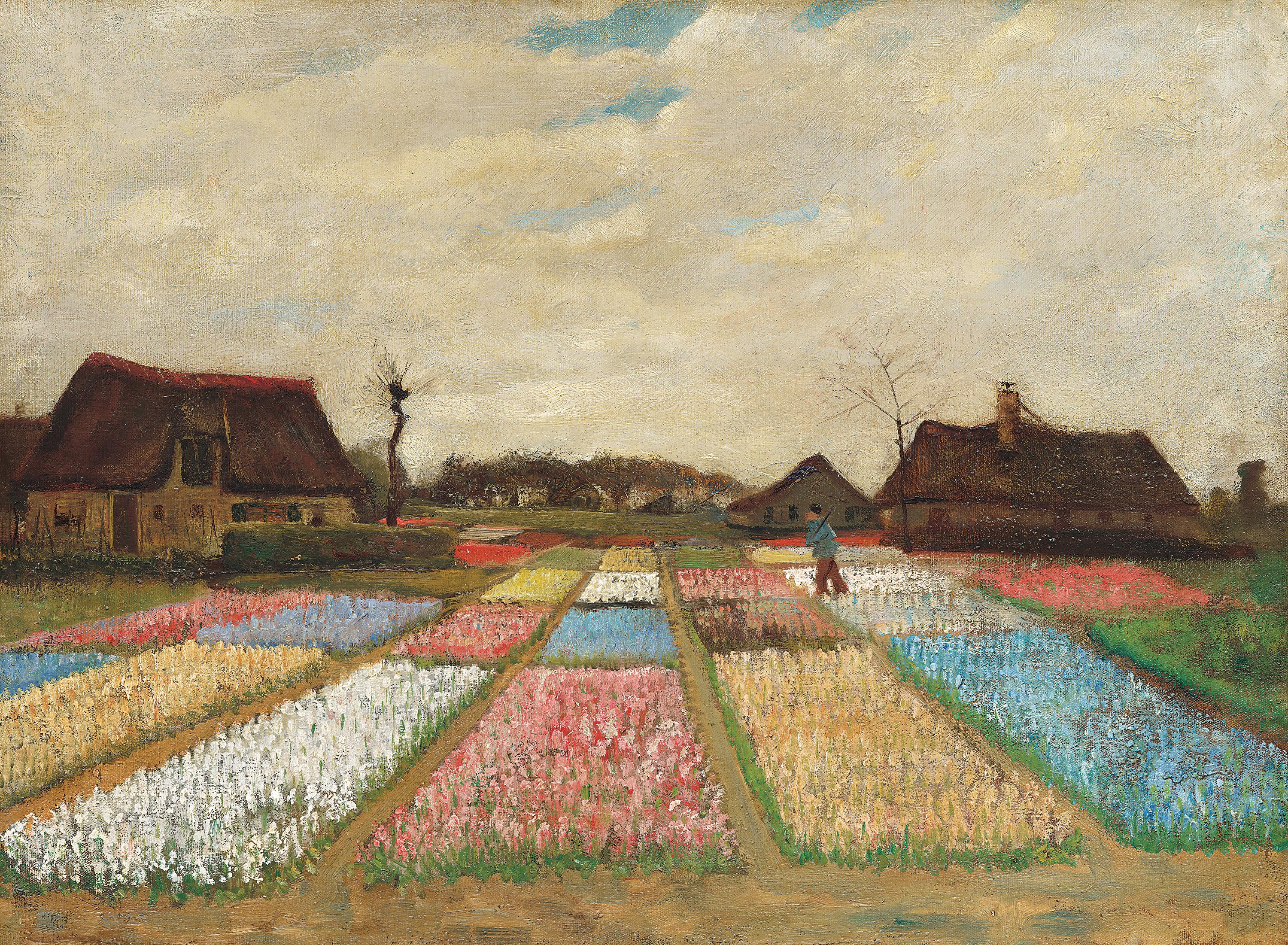

Eureka Math® Grade 3 Module 7
Published by Great Minds PBC
Student Name:
What does this painting have to do with math? Turn this book over to find out.
VIRGINIA
Learn Eureka Math® Grade 3 Module 7
VIRGINIA EDITION
Great Minds © is the creator of Eureka Math® , Wit & Wisdom® , Alexandria Plan™, and PhD Science®
Published by Great Minds PBC. greatminds.org
© 2022 Great Minds PBC. All rights reserved. No part of this work may be reproduced or used in any form or by any means—graphic, electronic, or mechanical, including photocopying or information storage and retrieval systems—without written permission from the copyright holder.
Printed in the USA
1 2 3 4 5 6 7 8 9 10 LSC 25 24 23 22 21
ISBN 978-1-64497-896-2
Learn ♦ Practice ♦ Succeed
Eureka Math® student materials for A Story of Units® (K–5) are available in the Learn, Practice, Succeed trio. This series supports differentiation and remediation while keeping student materials organized and accessible. Educators will find that the Learn, Practice, and Succeed series also offers coherent—and therefore, more effective—resources for Response to Intervention (RTI), extra practice, and summer learning.
Learn
Eureka Math Learn serves as a student’s in-class companion where they show their thinking, share what they know, and watch their knowledge build every day. Learn assembles the daily classwork—Application Problems, Exit Tickets, Problem Sets, templates—in an easily stored and navigated volume.
Practice
Each Eureka Math lesson begins with a series of energetic, joyous fluency activities, including those found in Eureka Math Practice. Students who are fluent in their math facts can master more material more deeply. With Practice, students build competence in newly acquired skills and reinforce previous learning in preparation for the next lesson.
Together, Learn and Practice provide all the print materials students will use for their core math instruction.
Succeed
Eureka Math Succeed enables students to work individually toward mastery. These additional problem sets align lesson by lesson with classroom instruction, making them ideal for use as homework or extra practice. Each problem set is accompanied by a Homework Helper, a set of worked examples that illustrate how to solve similar problems.
Teachers and tutors can use Succeed books from prior grade levels as curriculum-consistent tools for filling gaps in foundational knowledge. Students will thrive and progress more quickly as familiar models facilitate connections to their current grade-level content.
Students, families, and educators:
Thank you for being part of the Eureka Math® community, where we celebrate the joy, wonder, and thrill of mathematics.
In the Eureka Math classroom, new learning is activated through rich experiences and dialogue. The Learn book puts in each student’s hands the prompts and problem sequences they need to express and consolidate their learning in class.
What is in the Learn book?
Application Problems: Problem solving in a real-world context is a daily part of Eureka Math. Students build confidence and perseverance as they apply their knowledge in new and varied situations. The curriculum encourages students to use the RDW process—Read the problem, Draw to make sense of the problem, and Write an equation and a solution. Teachers facilitate as students share their work and explain their solution strategies to one another.
Problem Sets: A carefully sequenced Problem Set provides an in-class opportunity for independent work, with multiple entry points for differentiation. Teachers can use the Preparation and Customization process to select “Must Do” problems for each student. Some students will complete more problems than others; what is important is that all students have a 10-minute period to immediately exercise what they’ve learned, with light support from their teacher.
Students bring the Problem Set with them to the culminating point of each lesson: the Student Debrief. Here, students reflect with their peers and their teacher, articulating and consolidating what they wondered, noticed, and learned that day.
Exit Tickets: Students show their teacher what they know through their work on the daily Exit Ticket. This check for understanding provides the teacher with valuable real-time evidence of the efficacy of that day’s instruction, giving critical insight into where to focus next.
Templates: From time to time, the Application Problem, Problem Set, or other classroom activity requires that students have their own copy of a picture, reusable model, or data set. Each of these templates is provided with the first lesson that requires it.
Where can I learn more about Eureka Math resources?
The Great Minds® team is committed to supporting students, families, and educators with an ever-growing library of resources, available at eureka-math.org. The website also offers inspiring stories of success in the Eureka Math community. Share your insights and accomplishments with fellow users by becoming a Eureka Math Champion.
Best wishes for a year filled with aha moments!

Jill Diniz Director of Mathematics Great Minds
The Read–Draw–Write Process
The Eureka Math curriculum supports students as they problem-solve by using a simple, repeatable process introduced by the teacher. The Read–Draw–Write (RDW) process calls for students to
1. Read the problem.
2. Draw and label.
3. Write an equation.
4. Write a word sentence (statement).
Educators are encouraged to scaffold the process by interjecting questions such as
■ What do you see?
■ Can you draw something?
■ What conclusions can you make from your drawing?
The more students participate in reasoning through problems with this systematic, open approach, the more they internalize the thought process and apply it instinctively for years to come.
Name Date
Lena’s family visits Little Tree Apple Orchard. Use the RDW process to solve the problems about Lena’s visit to the orchard. Use a letter to represent the unknown in each problem.
1. The sign below shows information about hayrides at the orchard.
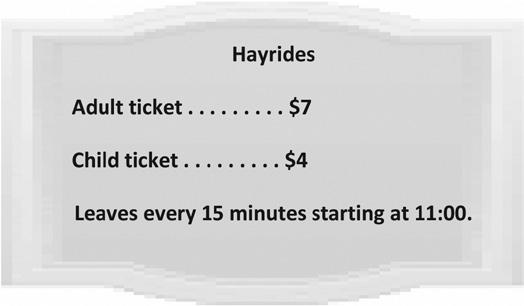
a. Lena’s family buys 2 adult tickets and 2 child tickets for the hayride. How much does it cost Lena’s family to go on the hayride?
b. Lena’s mom pays for the tickets with $5 bills. She receives $3 in change. How many $5 bills does Lena’s mom use to pay for the hayride?
c. Lena’s family wants to go on the fourth hayride of the day. It’s 11:38 now. How many minutes do they have to wait for the fourth hayride?
Solve word problems in varied contexts using a letter to represent the unknown.
2. Lena picked 17 apples, and her brother picked 19. Lena’s mom has a pie recipe that requires 9 apples. How many pies can Mom make with the apples that Lena and her brother picked?
3. Lena’s dad gives the cashier $30 to pay for 6 liters of apple cider. The cashier gives him $6 in change. How much does each liter of apple cider cost?
4. The apple orchard has 152 apple trees. There are 88 trees with red apples. The rest of the trees have green apples. How many more trees have red apples than green apples?
Solve word problems in varied contexts using a letter to represent the unknown.
Name
Date
Use the RDW process to solve the problem below. Use a letter to represent the unknown.
Sandra keeps her sticker collection in 7 albums. Each album has 40 stickers in it. She starts a new album that has 9 stickers in it. How many total stickers does she have in her collection?
Solve word problems in varied contexts using a letter to represent the unknown.
Name
Date
Use the RDW process to solve. Use a letter to represent the unknown in each problem.
1. Leanne needs 120 tiles for an art project. She has 56 tiles. If tiles are sold in boxes of 8, how many more boxes of tiles does Leanne need to buy?
2. Gwen pours 236 milliliters of water into Ravi’s beaker. Henry pours 189 milliliters of water into Ravi’s beaker. Ravi’s beaker now contains 800 milliliters of water. How much water was in Ravi’s beaker to begin with?
3. Maude hung 3 pictures on her wall. Each picture measures 8 inches by 10 inches. What is the total area of the wall covered by the pictures?
Solve word problems in varied contexts using a letter to represent the unknown.
4. Kami scored a total of 21 points during her basketball game. She made 6 two-point shots, and the rest were three-point shots. How many three-point shots did Kami make?
5. An orange weighs 198 grams. A kiwi weighs 85 grams less than the orange. What is the total weight of the fruit?
6. The total amount of rain that fell in New York City in two years was 282 centimeters. In the first year, 185 centimeters of rain fell. How many more centimeters of rain fell in the first year than in the second year?
Solve word problems in varied contexts using a letter to represent the unknown.
Name
Date
Use the RDW process to solve the problem below. Use a letter to represent the unknown. Jaden’s bottle contains 750 milliliters of water. He drinks 520 milliliters at practice and then another 190 milliliters on his way home. How many milliliters of water are left in Jaden’s bottle when he gets home?
Solve word problems in varied contexts using a letter to represent the unknown.
Name Date
Use the RDW process to solve the problems below. Use a letter to represent the unknown in each problem. When you are finished, share your solutions with a partner. Discuss and compare your strategies with your partner’s strategies.
1. Monica measures 91 milliliters of water into 9 tiny beakers. She measures an equal amount of water into the first 8 beakers. She pours the remaining water into the ninth beaker. It measures 19 milliliters. How many milliliters of water are in each of the first 8 beakers?
2. Matthew and his dad put up 8 six-foot lengths of fence on Monday and 9 six-foot lengths on Tuesday. What is the total length of the fence?
3. The total weight of Laura’s new pencils is 112 grams. One pencil rolls off the scale. Now the scale reads 105 grams. What is the total weight of 7 new pencils?
Share and critique peer solution strategies to varied word problems.
4. Mrs. Ford’s math class starts at 8:15. They do 3 fluency activities that each last 4 minutes. Just when they finish all of the fluency activities, the fire alarm goes off. When they return to the room after the drill, it is 8:46. How many minutes did the fire drill last?
5. On Saturday, the baker bought a total of 150 pounds of flour in five-pound bags. By Tuesday, he had 115 pounds of flour left. How many five-pound bags of flour did the baker use?
6. Fred cut an 84-centimeter rope into 2 parts and gave his sister 1 part. Fred’s part is 56 centimeters long. His sister cut her rope into 4 equal pieces. How long is 1 of his sister’s pieces of rope?
Share and critique peer solution strategies to varied word problems.
Name Date
Use the RDW process to solve the problem below. Use a letter to represent the unknown. Twenty packs of fruit snacks come in a box. Each pack weighs 6 ounces. Students eat some. There are 48 ounces of fruit snacks left in the box. How many ounces of fruit snacks did the students eat?
Share and critique peer solution strategies to varied word problems.
Lesson 3:
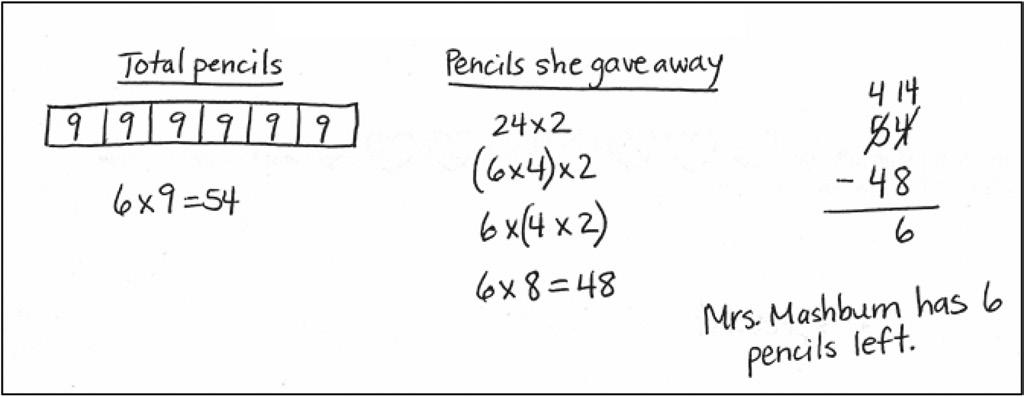
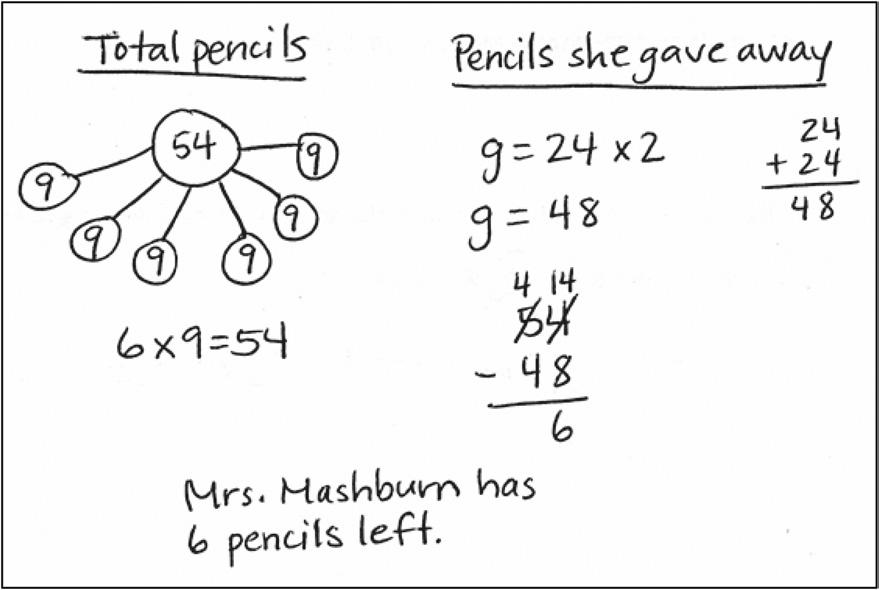
student work samples
Share and critique peer solution strategies to varied word problems.
Lesson 3:
Student A
Student B
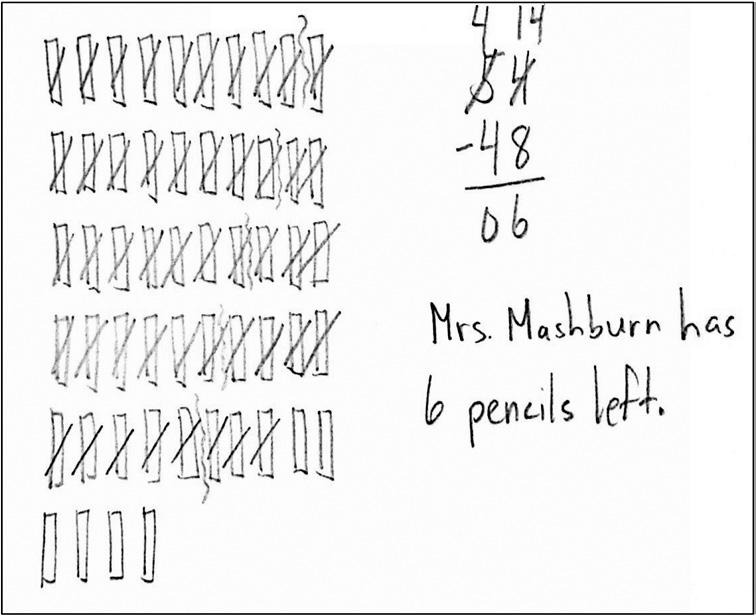
student work samples
Share and critique peer solution strategies to varied word problems.
Student C
Micki bought a pen for $1.29 and an eraser for $0.48. She paid with a $5 bill. How much change should Micki receive from the cashier? Explain your answer.
Lesson 4: Create and solve word problems.
Name Date
1. Use the tape diagrams to write story problems about John’s trip to the toy store and the money that he spends there.
a. ? John’s money
John goes to the toy store with $60.
b. ?
John’s money
Lesson 4: Create and solve word problems.
2. Use the tape diagrams to write story problems about Jenny and her time between school and dinnertime.
a. ?
Jenny’s minutes
b. ?
Jenny’s minutes
Lesson 4: Create and solve word problems.
c. ? Jenny’s minutes
3. Draw your own tape diagram. Have your partner write a story problem to match it. Solve the problem together.
Lesson 4: Create and solve word problems.
Name Date
Write a story problem about animals at the zoo that matches the tape diagram. Then solve the problem. ?
Animals
Ella sees a total of 40 animals at the zoo.
Lesson 4: Create and solve word problems.
Lesson
Lesson 5 Application Problem
Sam wants to know how many hours are in 3 days. He knows that there are 24 hours in a day. How can Sam solve this problem?
Read Draw Write
Lesson 5: Identify and draw points, lines, line segments, rays, and angles. Recognize them in various contexts and familiar figures.
Name Date
1. Use the following directions to draw a figure in the box to the right.
a. Draw two points: A and B
b. Use a straightedge to draw ray AB
c. Draw a new point that is not on ray AB. Label it C
d. Draw line segment AC
e. Draw a point not on ray AB or line segment AC Call it D.
f. Construct line CD.
g. Use the points you’ve already labeled to name one angle.
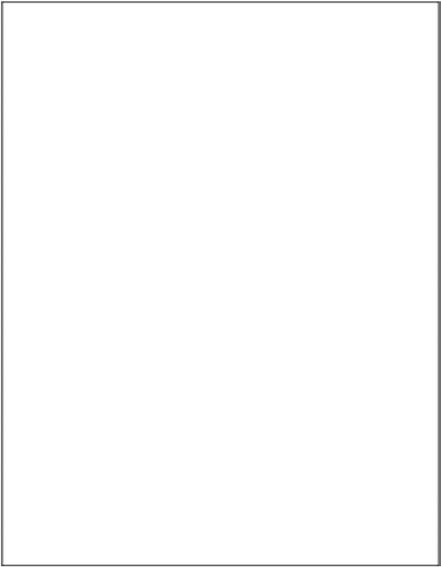
2. Use the following directions to draw a figure in the box to the right.
a. Draw two points: EF.
b. Use a straightedge to draw line segment EF.
c. Draw a new point that is not on line segment EF. Label it G.
d. Draw ray FG.
e. Draw a new point that is not on line segment EF or ray FG. Label it H
f. Construct line EH
g. Identify two angles: and
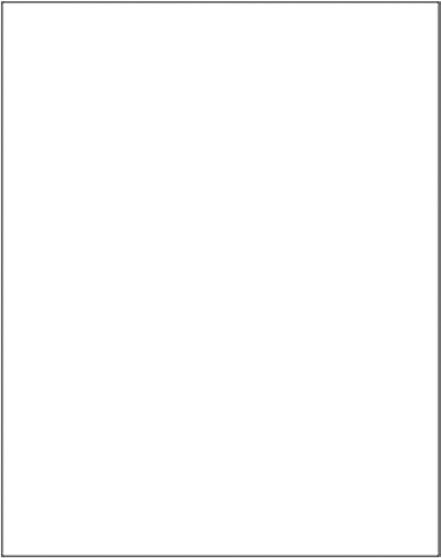
Lesson 5: Identify and draw points, lines, line segments, rays, and angles. Recognize them in various contexts and familiar figures.
Lesson 5 Problem Set
3. a. Observe the familiar figures below. Label some points on each figure.
b. Use those points to label and name representations of each of the following in the table below: ray, line, line segment, and angle. Extend segments to show lines and rays.
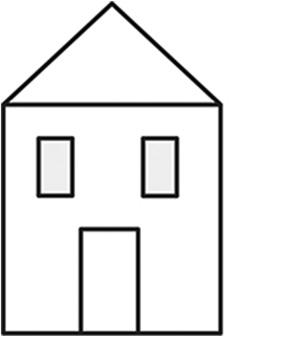
Extension: Draw a familiar figure. Label it with points, and then identify rays, lines, line segments, and angles as applicable.
Lesson 5: Identify and draw points, lines, line segments, rays, and angles. Recognize them in various contexts and familiar figures.
House Kite
Lesson 5 Exit Ticket
Name Date
1. Draw a line segment to connect the word to its picture. Angle Line Line segment Point Ray

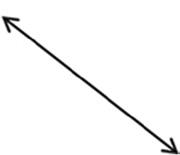
2. How is a ray different from a line segment?

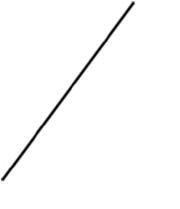
Lesson 5: Identify and draw points, lines, line segments, rays, and angles. Recognize them in various contexts and familiar figures.
Lesson 6 Application Problem
The third graders raised $437 in a fundraiser. The fourth graders raised $68 less than the third graders. How much money did the two grade levels raise altogether? Read Draw Write
Lesson 6:
1. Cut out all the polygons (A–L) in the Template. Then, use the polygons to complete the following chart.
Attribute Write the letters of the polygons in this group. Sketch 1 polygon from the group.
Example: 3 Sides Polygons: Y, Z
4 Sides Polygons:
Exactly 1 Set of Parallel Sides Polygons:
2 Sets of Parallel Sides Polygons:
4 Right Angles Polygons:
4 Right Angles and 4 Equal Sides Polygons: Compare and classify quadrilaterals.
Lesson 6:

2. Write the letters of the polygons that are quadrilaterals. Explain how you know these polygons are quadrilaterals.
3. Sketch a polygon below from the group that has 2 sets of parallel sides. Trace 1 pair of parallel sides red. Trace the other pair of parallel sides blue. What makes parallel sides different from sides that are not parallel?
4. Draw a diagonal line from one corner to the opposite corner of each polygon you drew in the chart using a straightedge. What new polygon(s) did you make by drawing the diagonal lines?
Compare and classify quadrilaterals.
Name Date
List as many attributes as you can to describe each polygon below.
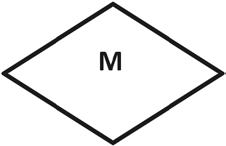
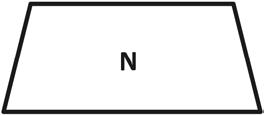
Compare and classify quadrilaterals.
Lesson 6:

Compare and classify quadrilaterals.
Lesson 6:
Polygons (A–L)
1. Cut out all the polygons (M–X) in the Template. Then, use the polygons to complete the following chart.
Attribute List polygons’ letters for each group. Sketch 1 polygon from the group.
Example: 3 Sides Polygons: Y, Z
All Sides Are Equal Polygons:
All Sides Are Not Equal Polygons:
At Least 1 Right Angle Polygons:
Exactly 1 Set of Parallel Sides Polygons:
7:
Compare and classify other polygons.

2. Compare Polygon M and Polygon X. What is the same? What is different?
3. Jenny says, “Polygon N, Polygon R, and Polygon S are all regular quadrilaterals!” Is she correct? Why or why not?
4. “I have six equal sides and six equal angles. I have three sets of parallel sides. I have no right angles.”
a. Write the letter and the name of the polygon described above.
b. Estimate to draw the same type of polygon as in part (a), but with no equal sides.
Compare and classify other polygons.
Name Date
Jonah draws the polygon below. Use your ruler and right angle tool to measure his polygon. Then, answer the questions below.
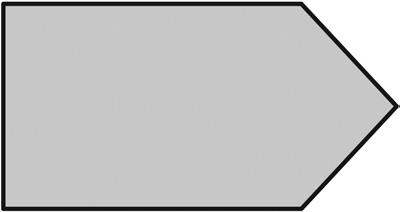
1. Is Jonah’s polygon a regular polygon? Explain how you know.
2. How many right angles does his polygon have? Circle the right angles on his polygon.
3. How many sets of parallel sides does his polygon have?
4. What is the name of Jonah’s polygon?
7:
Compare and classify other polygons.
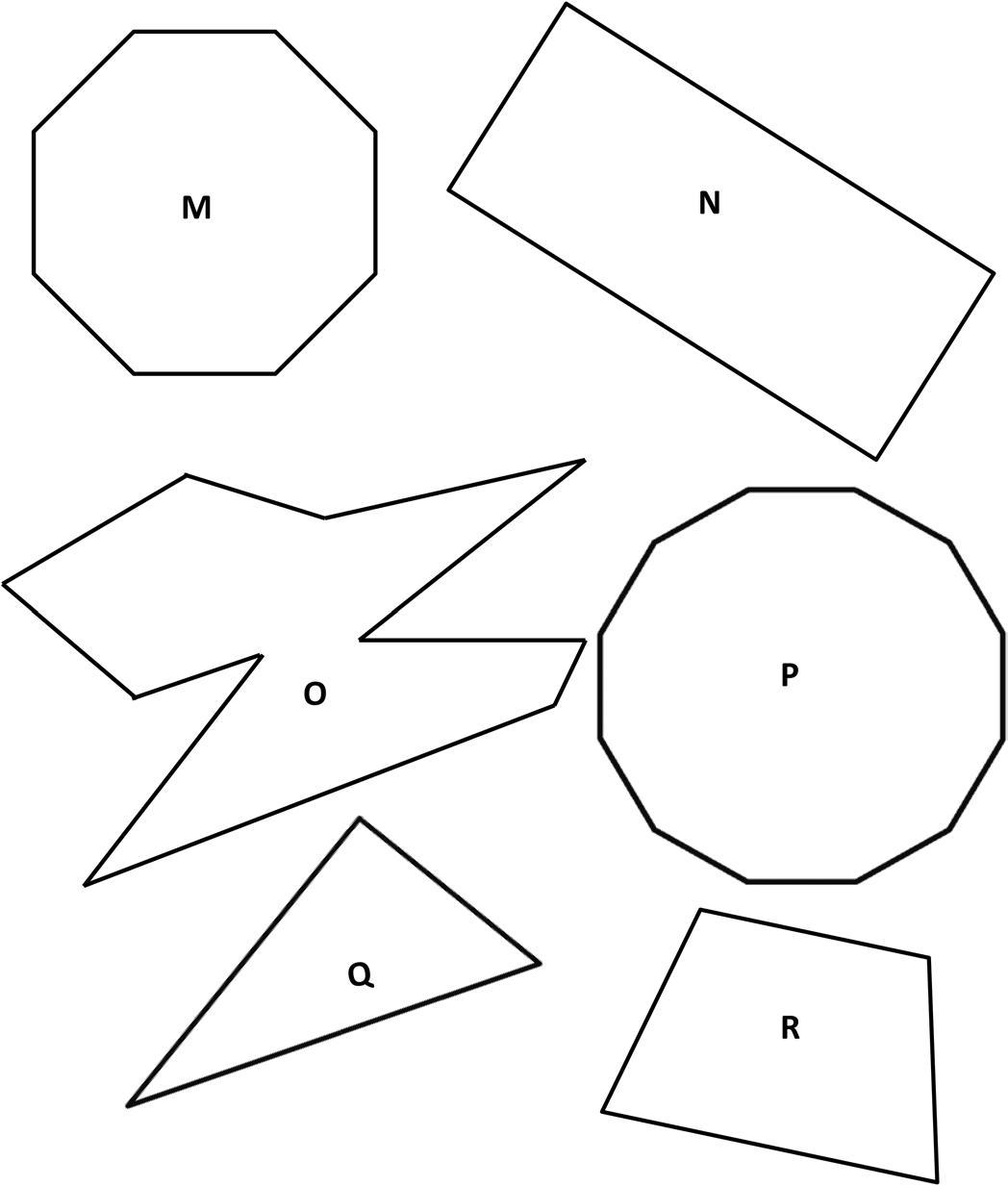
polygons (M–X)
Lesson 7: Compare and classify other polygons.
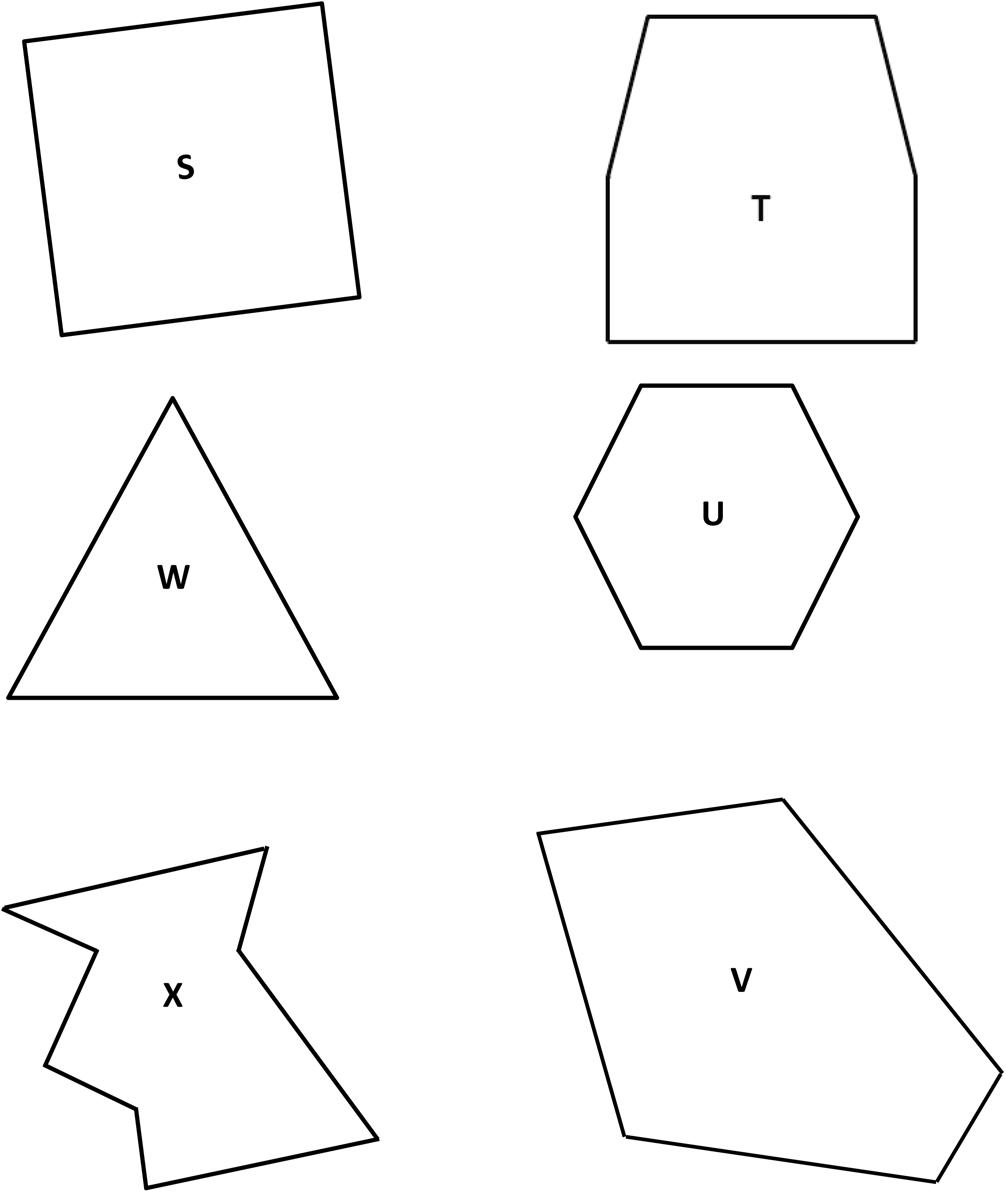
polygons (M–X)
Lesson 7: Compare and classify other polygons.
Lesson 8 Application Problem
Frankie says that all squares are rectangles, but not all rectangles are squares. Do you agree with this statement? Why or why not? Draw diagrams to support your statement.
Lesson 8:
Name Date
Use a ruler and a right angle tool to help you draw the figures with the attributes given below.
1. Draw a triangle with 1 right angle.
2. Draw a quadrilateral with 4 right angles and sides that are all 2 inches long.
3. Draw a quadrilateral with exactly 1 set of parallel sides. Trace the parallel sides green.
8:
Draw polygons with specified attributes to solve problems.
4. Draw a pentagon with at least 2 equal sides. Label the 2 equal side lengths of your shape.
5. Draw a hexagon with at least 2 equal sides. Label the 2 equal side lengths of your shape.
6. Sam says that he drew a polygon with 2 sides and 2 angles. Can Sam be correct? Use pictures to help you explain your answer.
Draw polygons with specified attributes to solve problems.
Name Date
Use a ruler and a right angle tool to help you draw a shape that matches the attributes of Jeanette’s shape. Label your drawing to explain your thinking.
Jeanette says her shape has 4 right angles and 2 sets of parallel sides. It is not a regular quadrilateral.
8:
Draw polygons with specified attributes to solve problems.
Lesson
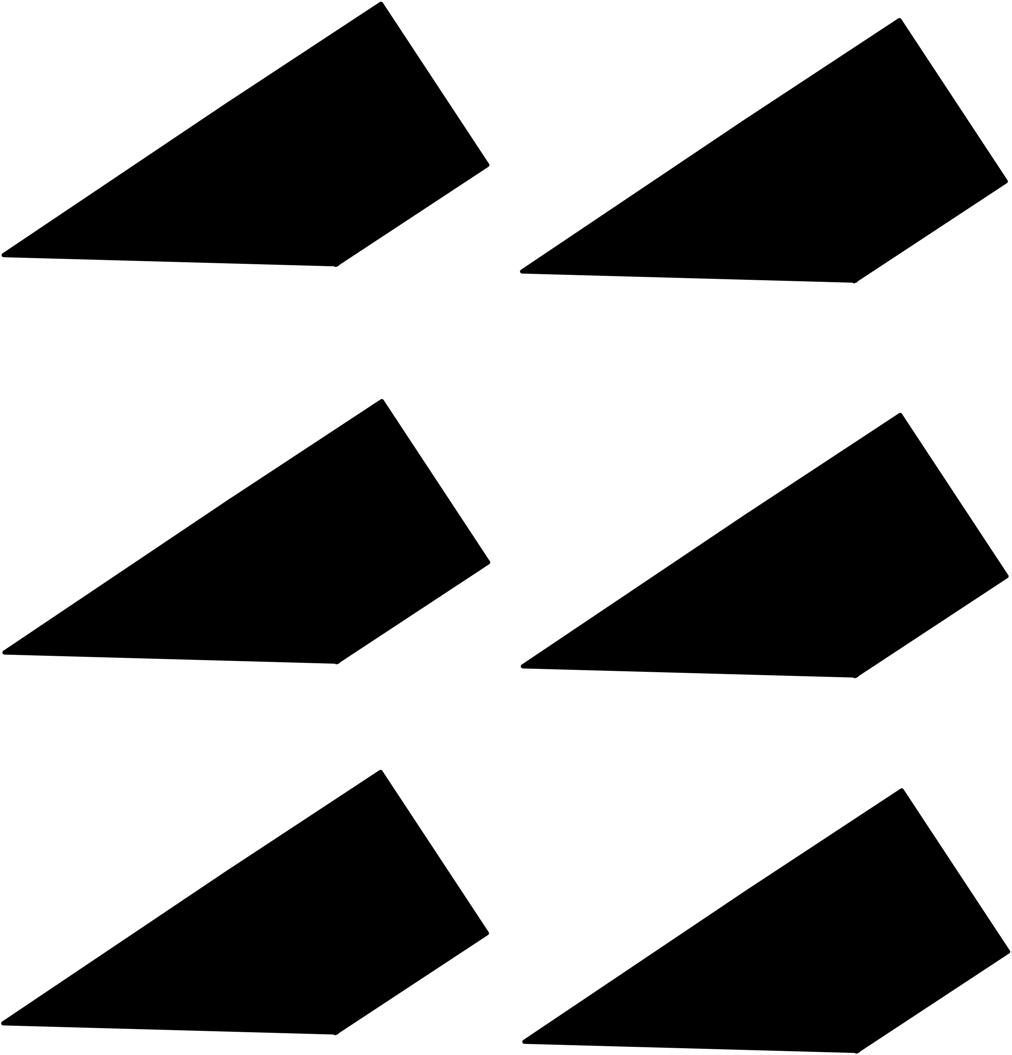
polygon
Lesson 8: Draw polygons with specified attributes to solve problems.
has at least 1 angle greater than a right angle is a quadrilateral has all equal sides (label side lengths)
has at least 1 angle less than a right angle is a trapezoid has at least 2 equal sides (label side lengths)
has at least 1 right angle is a hexagon has exactly 1 set of parallel sides has more than 4 angles is a parallelogram has no parallel sides
game cards
Lesson 8: Draw polygons with specified attributes to solve problems.
game cards
Lesson 8: Draw polygons with specified attributes to solve problems.
Name Date
1. Use tetrominoes to create at least two different rectangles. Then, color the grid below to show how you created your rectangles. You may use the same tetromino more than once.
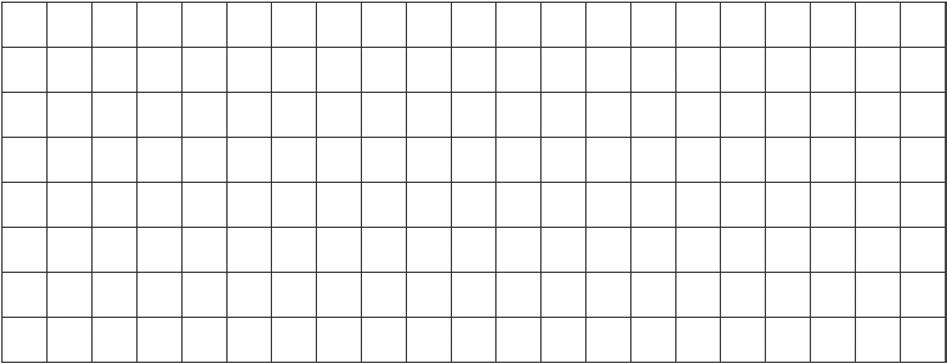
2. Use tetrominoes to create at least two squares, each with an area of 36 square units. Then, color the grid below to show how you created your squares. You may use the same tetromino more than once.

a. Write an equation to show the area of a square above as the sum of the areas of the tetrominoes you used to make the square.
b. Write an equation to show the area of a square above as the product of its side lengths.
9:
Reason about composing and decomposing polygons using tetrominoes.
3. a. Use tetrominoes to create at least two different rectangles, each with an area of 12 square units. Then, color the grid below to show how you created the rectangles. You may use the same tetromino more than once.
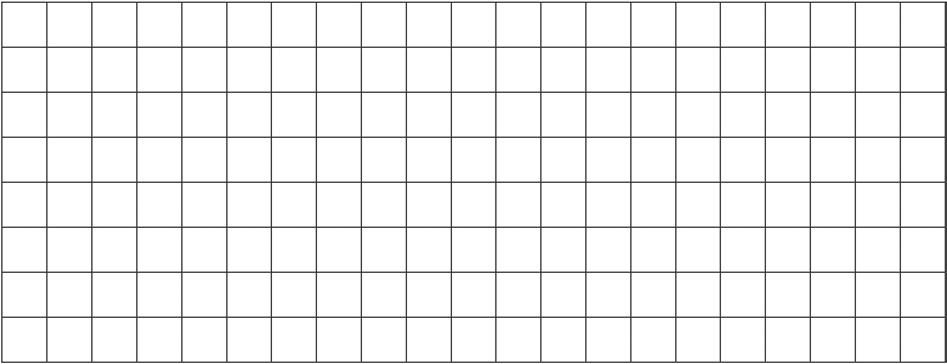
b. Explain how you know the area of each rectangle is 12 square units.
4. Marco created a rectangle with tetrominoes and traced its outline in the space below. Use tetrominoes to re-create it. Estimate to draw lines inside the rectangle below to show how you re-created Marco’s rectangle.

Reason about composing and decomposing polygons using tetrominoes.
Lesson 9:
Name Date
Use your tetrominoes to make a rectangle that has an area of 20 square units. Then, color the grid to show how you made your rectangle. You may use the same tetromino more than once.
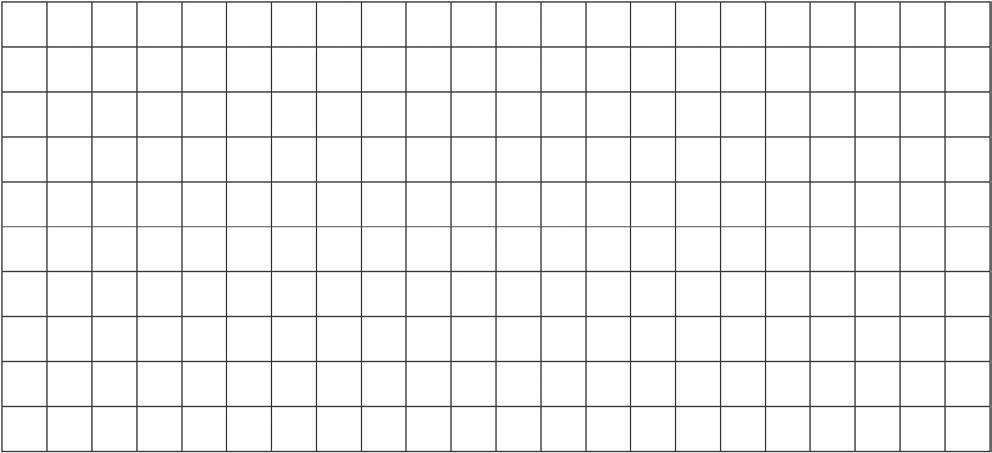
9:
Reason about composing and decomposing polygons using tetrominoes.
Lesson
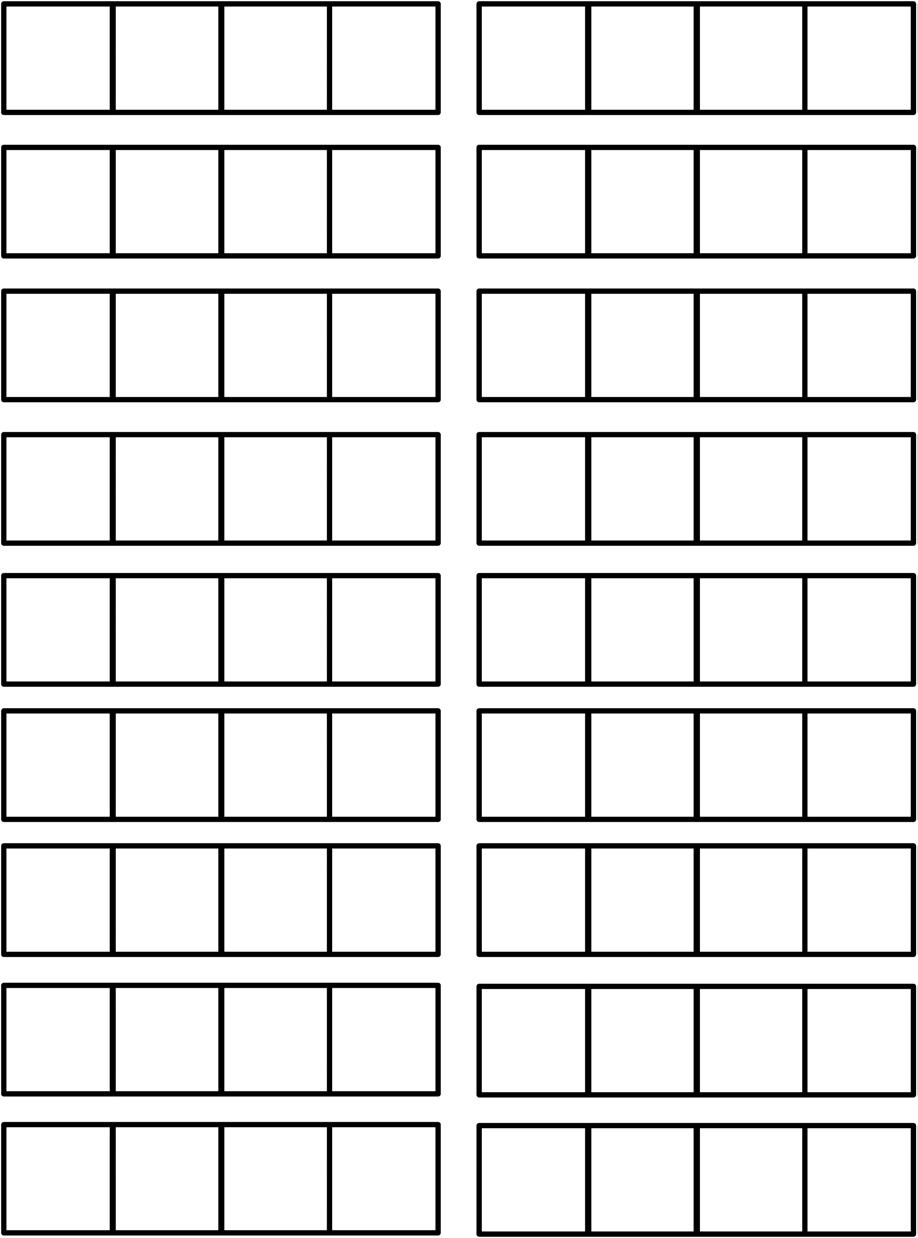
Lesson 9: Reason about composing and decomposing polygons using tetrominoes. tetrominoes
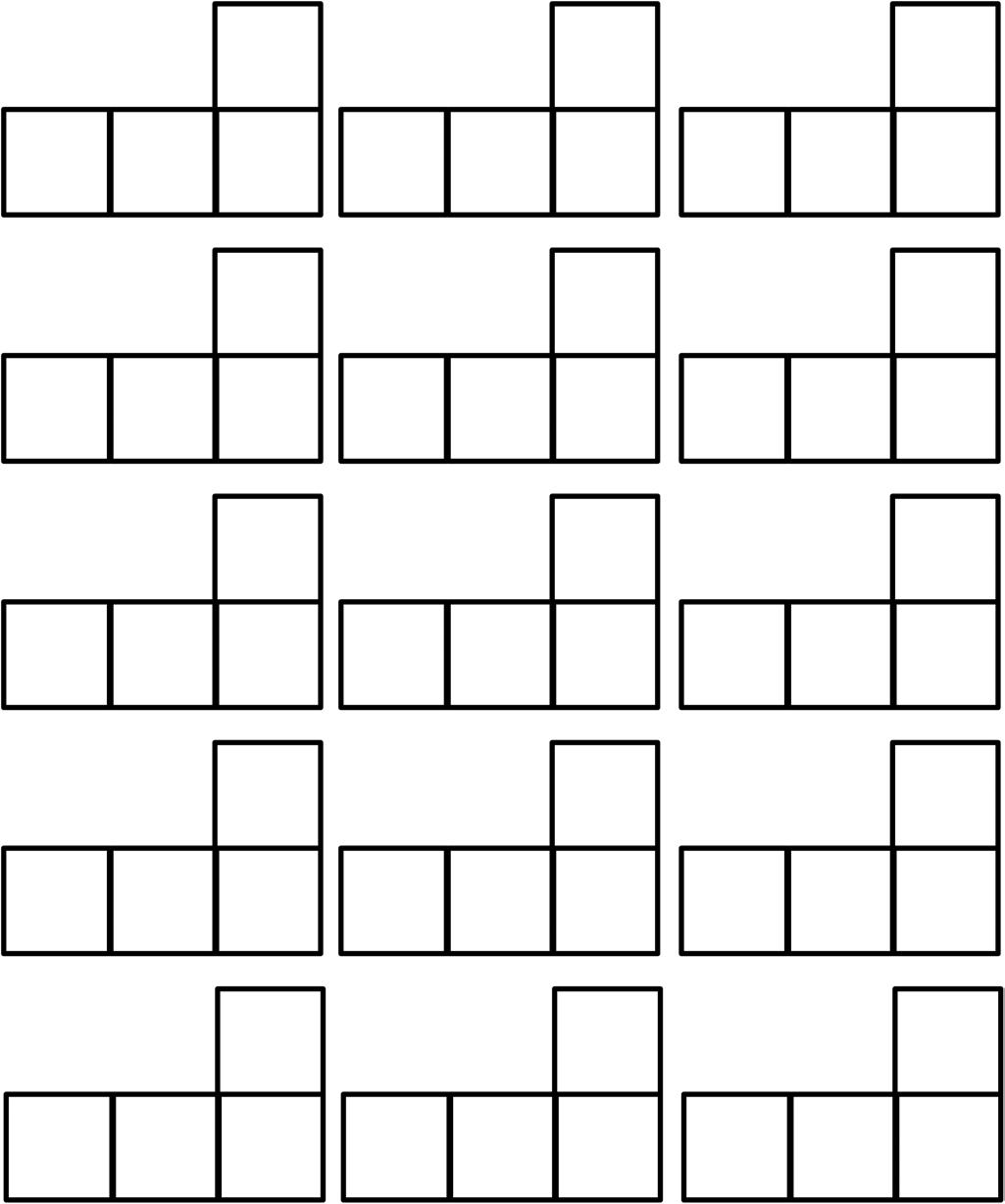
Lesson 9: Reason about composing and decomposing polygons using tetrominoes. tetrominoes
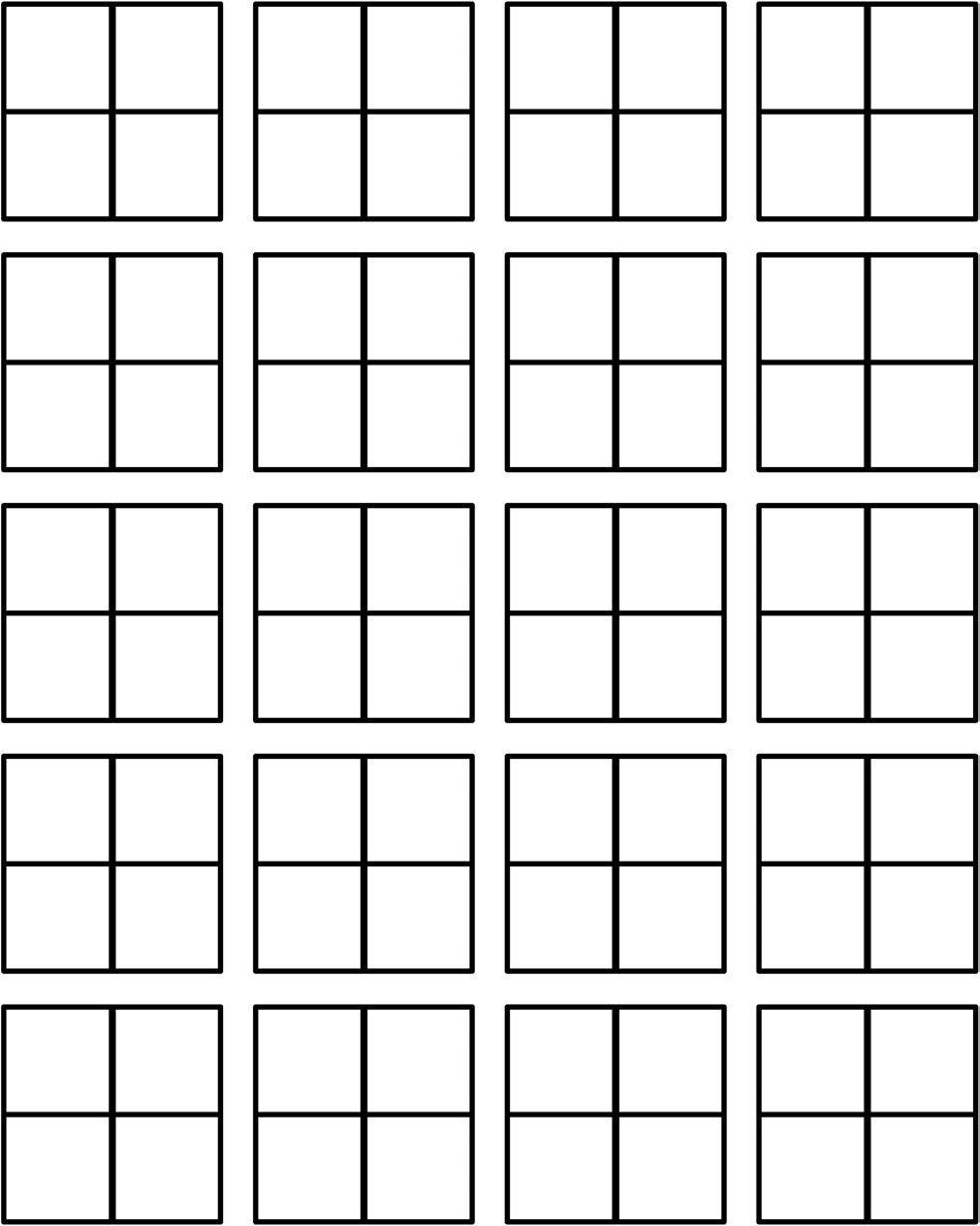
Lesson 9: Reason about composing and decomposing polygons using tetrominoes. tetrominoes
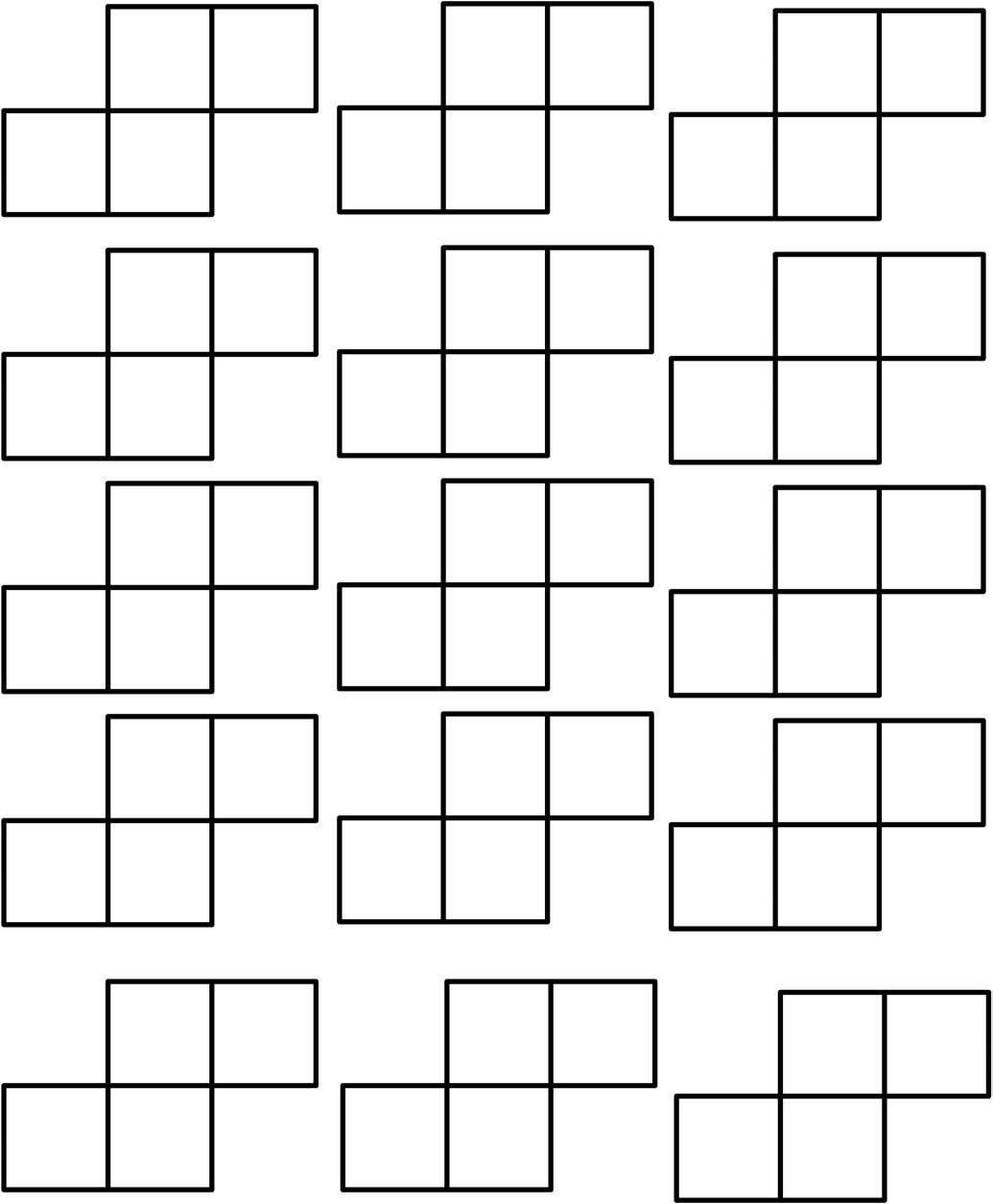
Lesson 9: Reason about composing and decomposing polygons using tetrominoes. tetrominoes
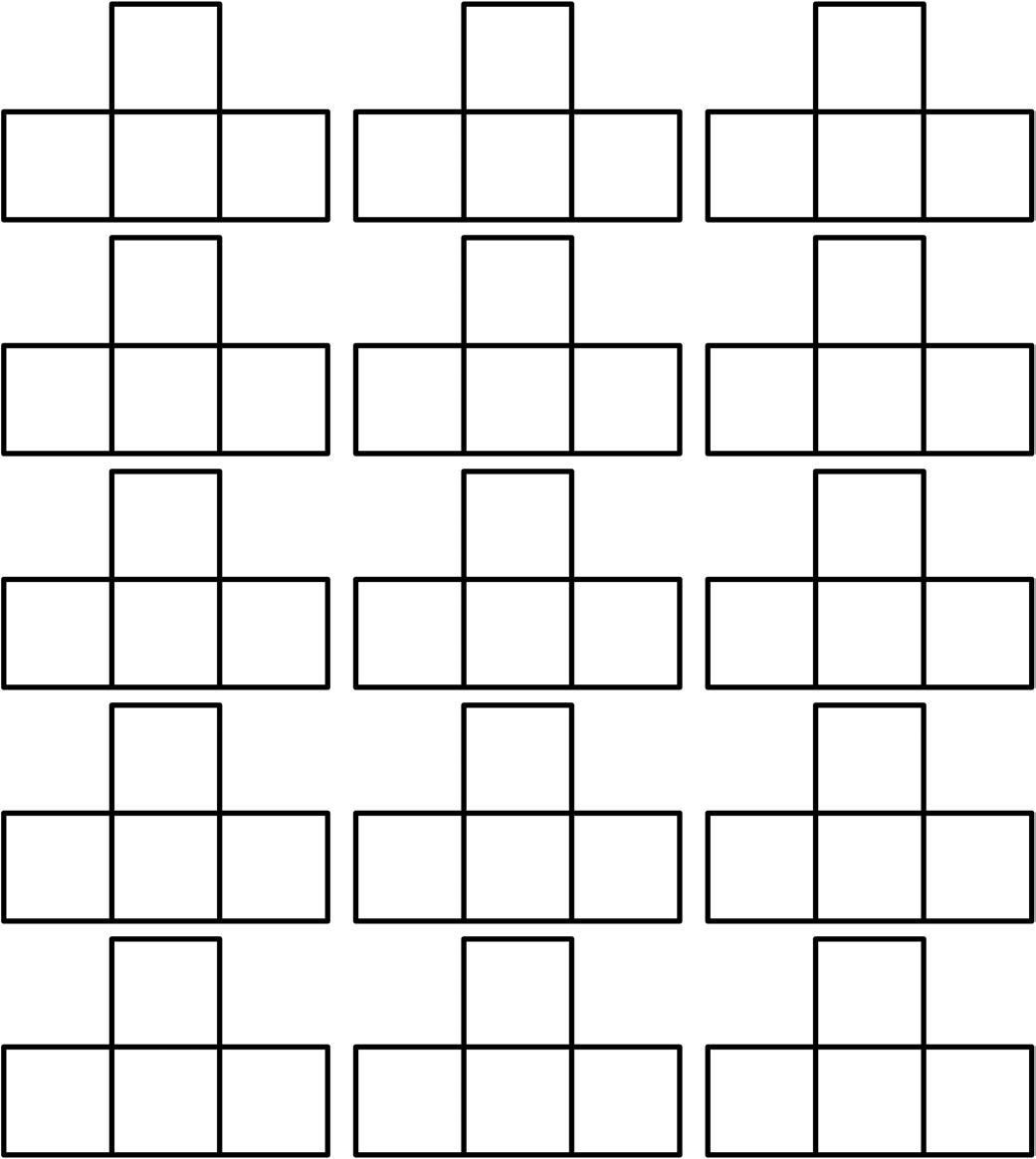
Lesson 9: Reason about composing and decomposing polygons using tetrominoes. tetrominoes
Name Date
1. Fold and cut the square on the diagonal. Draw and label your 2 new shapes below. Are these two shapes congruent?
2. Fold and cut one of the triangles in half. Draw and label your 2 new shapes below. Are these two shapes congruent?
3. Fold twice, and cut your large triangle. Draw and label your 2 new shapes below.
4. Fold and cut your trapezoid in half. Draw and label your 2 new shapes below.
10:
Create a tangram puzzle and observe relationships among the shapes.
5. Fold and cut one of your trapezoids. Draw and label your 2 new shapes below.
6. Fold and cut your second trapezoid. Draw and label your 2 new shapes below.
7. Reconstruct the original square using the seven shapes.
a. Draw lines inside the square below to show how the shapes go together to form the square. The first one has been done for you.
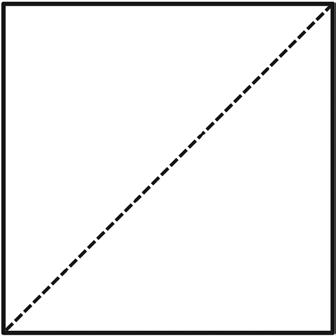
b. Describe the process of forming the square. What was easy, and what was challenging?
Lesson 10:
Create a tangram puzzle and observe relationships among the shapes.
Name Date
Choose three shapes from your tangram puzzle. Trace them below. Label the name of each shape, and describe at least one attribute that they have in common.
Lesson 10:
Create a tangram puzzle and observe relationships among the shapes.
Lesson 11 Application Problem
Name at least two attributes that a trapezoid, a square, and a parallelogram all have in common. Draw a diagram to support your ideas.
Lesson 11:
Read Draw Write
Reason about composing and decomposing polygons using tangrams.
Name Date
1. Use at least two tangram pieces to make and draw two of each of the following shapes. Draw lines to show where the tangram pieces meet.
a. A rectangle that does not have all equal sides.
b. A triangle.
c. A parallelogram.
d. A trapezoid.
Lesson 11:
Reason about composing and decomposing polygons using tangrams.
2. Use your two smallest triangles to create a square, a parallelogram, and a triangle. Show how you created them below.
3. Create your own shape on a separate sheet of paper using all seven pieces. Describe its attributes below.
4. Trade your outline with a partner to see if you can re-create her shape using your tangram pieces. Reflect on your experience below. What was easy? What was challenging?
Lesson 11:
Reason about composing and decomposing polygons using tangrams.
Name Date
Nancy uses her tangram pieces to make a trapezoid without using the square piece. Below, sketch how she might have created her trapezoid.
Lesson 11:
Reason about composing and decomposing polygons using tangrams.
Lesson 12 Application Problem
Trista uses all seven of her tangram pieces to make a square as shown. One side of the large square is 4 inches long. What is the total area of the two large triangles? Explain your answer.
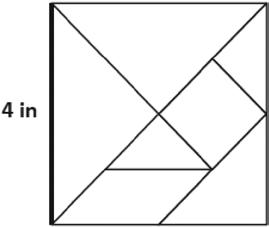
Decompose quadrilaterals to understand perimeter as the boundary of a shape.
Lesson 12:
Name Date
1. Use a 2-inch square to answer the questions below.
a. Trace the square in the space below with a red crayon.
b. Trace the new shape you made with the square in the space below with a red crayon.
c. Which shape has a greater perimeter? How do you know?
d. Color the inside of the shapes in Problem 1 (a) and (b) with a blue crayon.
12:
Decompose quadrilaterals to understand perimeter as the boundary of a shape.
e. Which color represents the perimeters of the shapes? How do you know?
f. What does the other color represent? How do you know?
g. Which shape has a greater area? How do you know?
2. a. Outline the perimeter of the shapes below with a red crayon.

b. Explain how you know you outlined the perimeters of the shapes above.
3. Outline the perimeter of this piece of paper with a highlighter.
Decompose quadrilaterals to understand perimeter as the boundary of a shape.
Name Date
Jason paints the outside edges of a rectangle purple. Celeste paints the inside of the rectangle yellow.
1. Use your crayons to color the rectangle that Jason and Celeste painted.
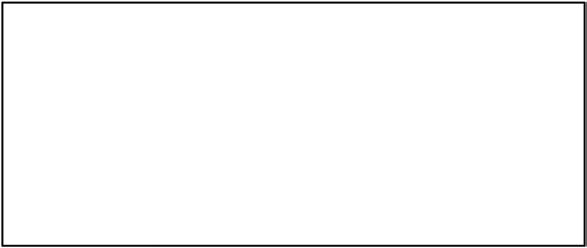
2. Which color represents the perimeter of the rectangle? How do you know?
Decompose quadrilaterals to understand perimeter as the boundary of a shape.
Lesson 12:
Name Date
1. Follow the directions below using the shape you created yesterday.
a. Tessellate your shape on a blank piece of paper.
b. Color your tessellation to create a pattern.
c. Outline the perimeter of your tessellation with a highlighter.
d. Use a string to measure the perimeter of your tessellation.
2. Compare the perimeter of your tessellation to a partner’s. Whose tessellation has a greater perimeter? How do you know?
3. How could you increase the perimeter of your tessellation?
4. How would overlapping your shape when you tessellated change the perimeter of your tessellation?
13:
Tessellate to understand perimeter as the boundary of a shape. (Optional.)
Name Date
Estimate to draw at least four copies of the given regular hexagon to make a new shape, without gaps or overlaps. Outline the perimeter of your new shape with a highlighter. Shade in the area with a colored pencil.
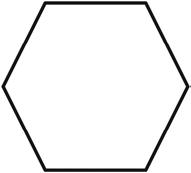
Tessellate to understand perimeter as the boundary of a shape. (Optional.)
Lesson 13:
Lesson 14 Application Problem
Angela measures the sides of a square napkin with her ruler. Each side measures 6 inches. What is the perimeter of the napkin?
14:
Measure side lengths in whole number units to determine the perimeter of polygons. Read Draw Write
Lesson
1. Measure and label the side lengths of the shapes below in centimeters. Then, find the perimeter of each shape. a.

Perimeter = cm + cm + cm + cm = cm

Perimeter = = cm c.
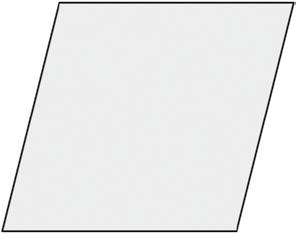
Perimeter = = cm
Perimeter = = cm e.
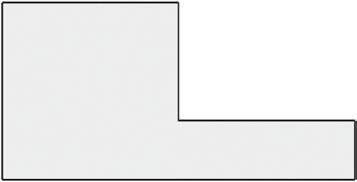
14:
Measure side lengths in whole number units to determine the perimeter of polygons.
2. Carson draws two triangles to create the new shape shown below. Use a ruler to find the side lengths of Carson’s shape in centimeters. Then, find the perimeter.
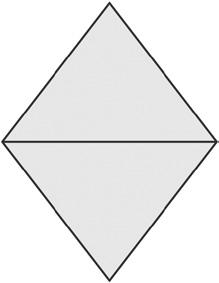
3. Hugh and Daisy draw the shapes shown below. Measure and label the side lengths in centimeters. Whose shape has a greater perimeter? How do you know?
Hugh’s Shape
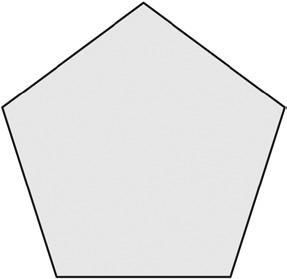
Shape
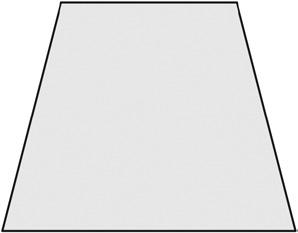
4. Andrea measures one side length of the square below and says she can find the perimeter with that measurement. Explain Andrea’s thinking. Then, find the perimeter in centimeters.
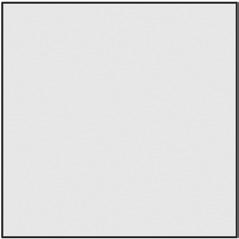
14:
Measure side lengths in whole number units to determine the perimeter of polygons.
Daisy’s
Name Date
Measure and label the side lengths of the shape below in centimeters. Then, find the perimeter.
Perimeter = = cm
14:
Measure side lengths in whole number units to determine the perimeter of polygons.
Lesson
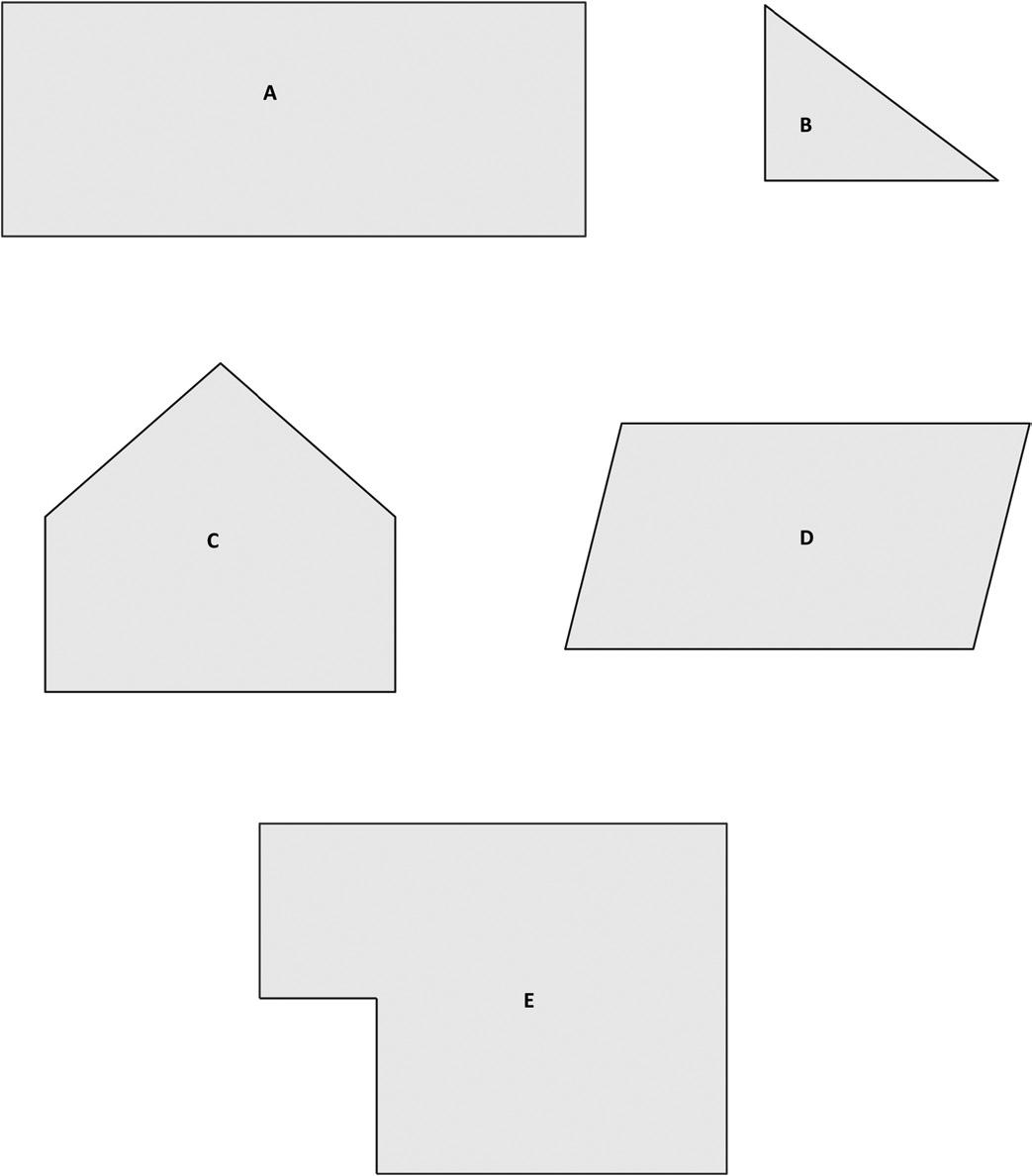
Measure side lengths in whole number units to determine the perimeter of polygons.
Lesson 14:
shapes
Lesson 15 Application Problem
Use an index card to answer the questions.
a. What is the perimeter of your index card in inches?
b. Place the short end of your index card next to the short end of your partner’s index card. Make a prediction: What do you think the perimeter is of the new shape you made?
c. Find the perimeter of the new shape. Was your prediction right? Why or why not? Explore perimeter as an attribute of plane figures and solve problems. Read Draw Write
Lesson 15:
Name Date
1. Find the perimeter of the following shapes.
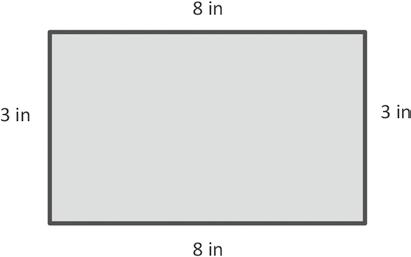
P = 3 in + 8 in + 3 in + 8 in = in
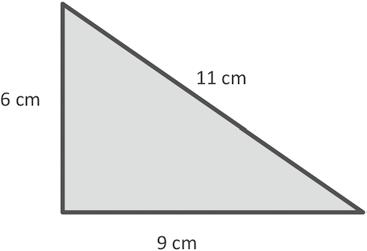
P = cm + cm + cm = cm
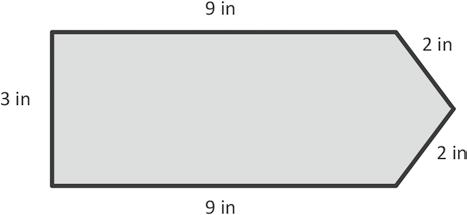

= cm + cm + cm + cm = cm
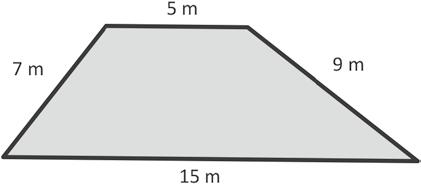
= m + m + m + m
Lesson 15: Explore perimeter as an attribute of plane figures and solve problems.
2. Alan’s rectangular swimming pool is 10 meters long and 16 meters wide. What is the perimeter?
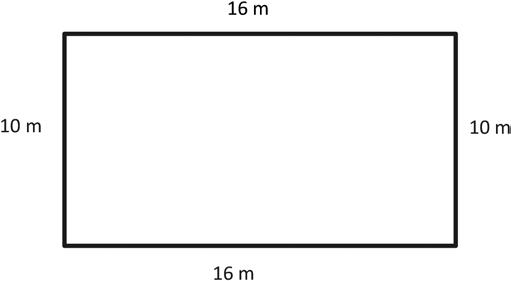
3. Lila measures each side of the shape below.
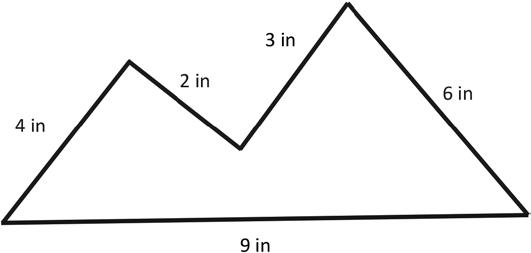
a. What is the perimeter of the shape?
b. Lila says the shape is a pentagon. Is she correct? Explain why or why not.
Lesson 15:
Explore perimeter as an attribute of plane figures and solve problems.
Name Date
Which shape below has the greater perimeter? Explain your answer.
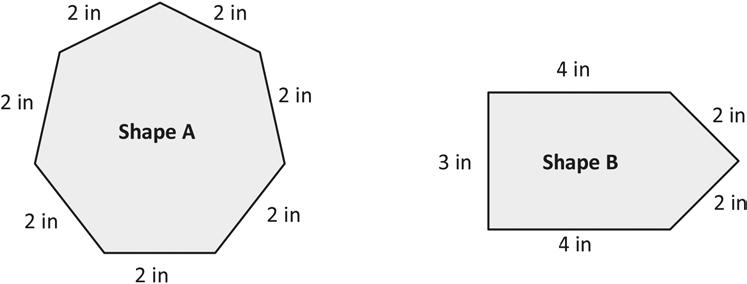
Explore perimeter as an attribute of plane figures and solve problems.
Lesson 15:
Note: Each Template page must be copied separately for students to cut out the cards.
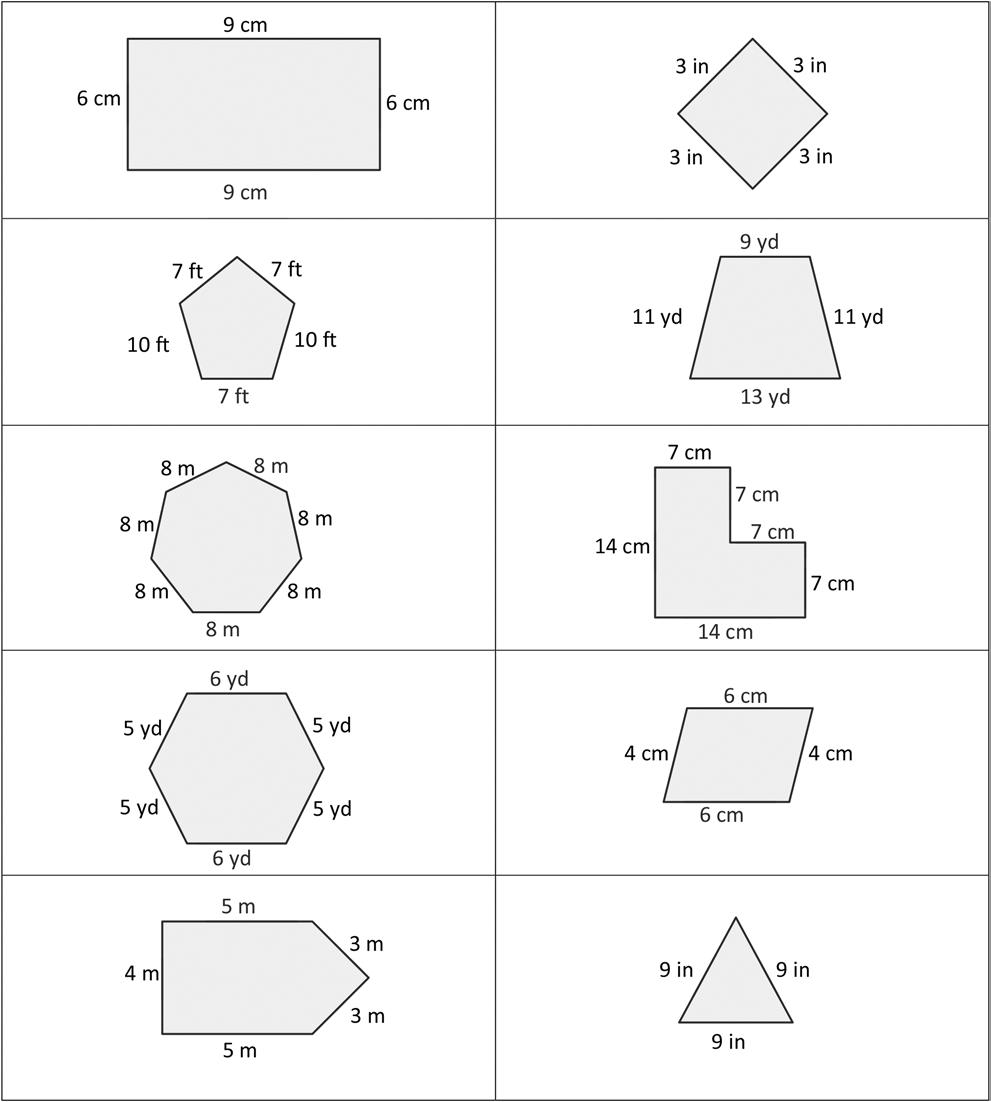
quiz-quiz-trade cards
Lesson 15:
Explore perimeter as an attribute of plane figures and solve problems.
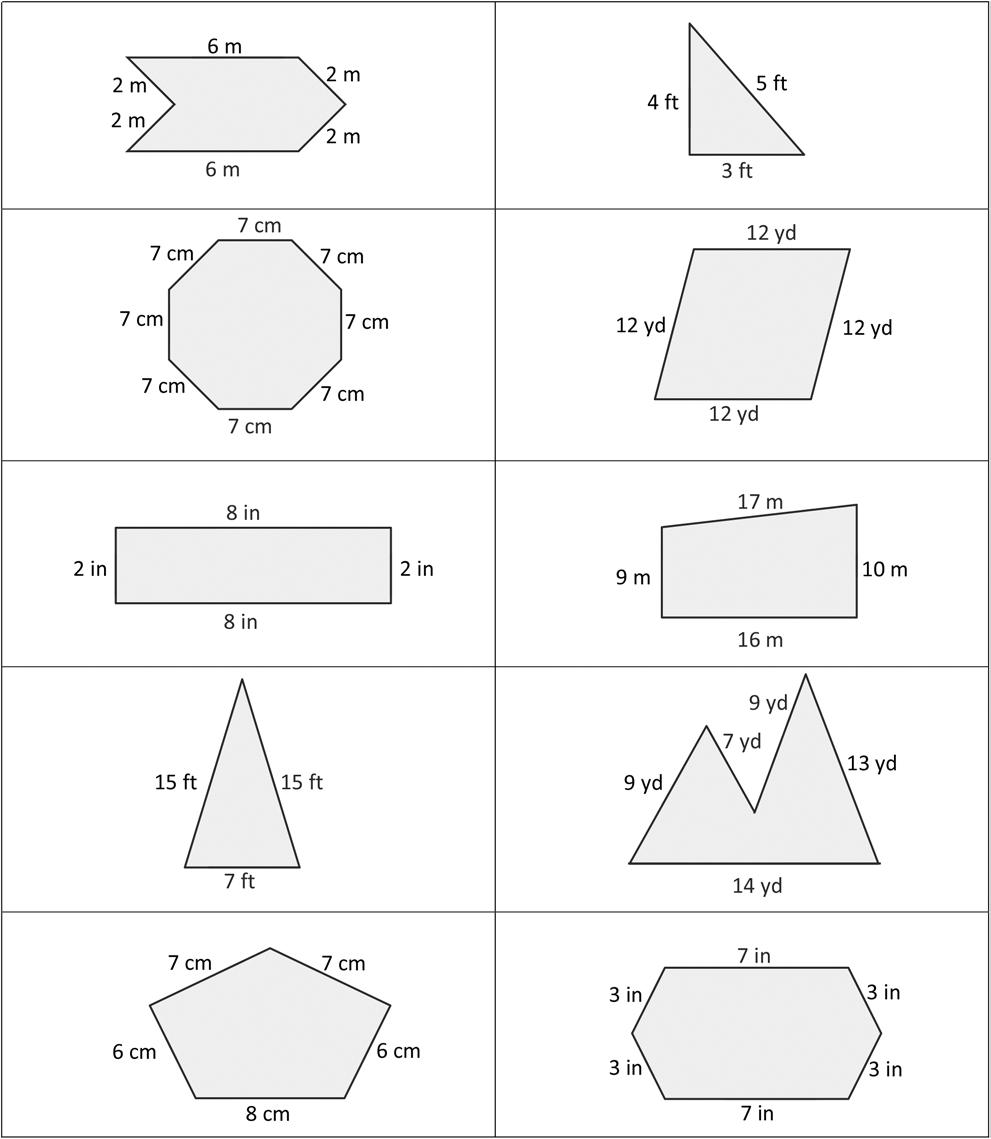
quiz-quiz-trade cards
Lesson 15: Explore perimeter as an attribute of plane figures and solve problems.
Lesson 16 Application Problem
A rectangular sheep pen measures 5 meters long and 9 meters wide. The perimeter of the cow pen is double the perimeter of the sheep pen. What is the perimeter of the cow pen?
Lesson 16:
Determine the perimeter of regular polygons and rectangles when whole number measurements are unknown. Read Draw Write
1. Label the unknown side lengths of the regular shapes below. Then, find the perimeter of each shape. a.
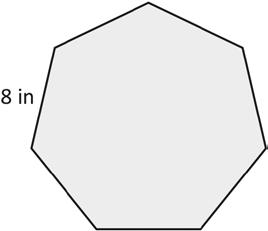
Perimeter = in
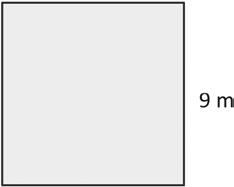
Perimeter = m
Perimeter = ft
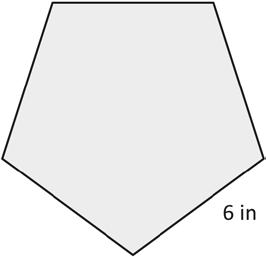
Perimeter = in
2. Label the unknown side lengths of the rectangle below. Then, find the perimeter of the rectangle.

Lesson 16:
Perimeter = cm
Determine the perimeter of regular polygons and rectangles when whole number measurements are unknown.
3. David draws a regular octagon and labels a side length as shown below. Find the perimeter of David’s octagon.
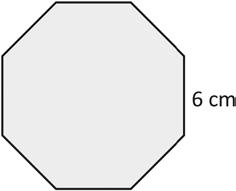
4. Paige paints an 8-inch by 9-inch picture for her mom’s birthday. What is the total length of wood that Paige needs to make a frame for the picture?
5. Mr. Spooner draws a regular hexagon on the board. One of the sides measures 4 centimeters. Giles and Xander find the perimeter. Their work is shown below. Whose work is correct? Explain your answer.
Giles’s Work
Perimeter = 4 cm + 4 cm + 4 cm + 4 cm + 4 cm + 4 cm
Perimeter = 24 cm
Xander’s Work
Perimeter = 6 × 4 cm
Perimeter = 24 cm
Lesson 16:
Determine the perimeter of regular polygons and rectangles when whole number measurements are unknown.
Name Date
Travis traces a regular pentagon on his paper. Each side measures 7 centimeters. He also traces a regular hexagon on his paper. Each side of the hexagon measures 5 centimeters. Which shape has a greater perimeter? Show your work.
Lesson 16:
Determine the perimeter of regular polygons and rectangles when whole number measurements are unknown.
Lesson 17 Application Problem
Clara and Pedro each use four 3-inch by 5-inch cards to make the rectangles below. Whose rectangle has a greater perimeter?

Lesson 17:
1. Mrs. Kozlow put a border around a 5-foot by 6-foot rectangular bulletin board. How many feet of border did Mrs. Kozlow use?
2. Jason built a model of the Pentagon for a social studies project. He made each outside wall 33 centimeters long. What is the perimeter of Jason’s model pentagon?
3. The Holmes family plants a rectangular 8-yard by 9-yard vegetable garden. How many yards of fencing do they need to put a fence around the garden?
Lesson 17:
Solve word problems to determine perimeter with given side lengths.
4. Marion paints a 5-pointed star on her bedroom wall. Each side of the star is 18 inches long. What is the perimeter of the star?
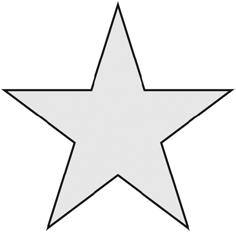
5. The soccer team jogs around the outside of the soccer field twice to warm up. The rectangular field measures 60 yards by 100 yards. What is the total number of yards the team jogs?
6. Troop 516 makes 3 triangular flags to carry at a parade. They sew ribbon around the outside edges of the flags. The flags’ side lengths each measure 24 inches. How many inches of ribbon does the troop use?
Lesson 17:
Solve word problems to determine perimeter with given side lengths.
Name Date
Marlene ropes off a square section of her yard where she plants grass. One side length of the square measures 9 yards. What is the total length of rope Marlene uses?
Lesson 17:
Solve word problems to determine perimeter with given side lengths.
Name Date
1. Find the perimeter of 10 circular objects to the nearest quarter inch using string. Record the name and perimeter of each object in the chart below.
Object
Perimeter (to the nearest quarter inch)
a. Explain the steps you used to find the perimeter of the circular objects in the chart above.
b. Could the same process be used to find the perimeter of the shape below? Why or why not?
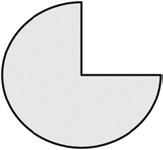
Lesson 18:
Use string to measure the perimeter of various circles to the nearest quarter inch.
2. Can you find the perimeter of the shape below using just your ruler? Explain your answer.
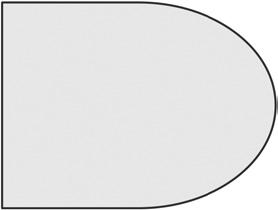
1 4
3. Molly says the perimeter of the shape below is inches. Use your string to check her work. Do you agree with her? Why or why not?
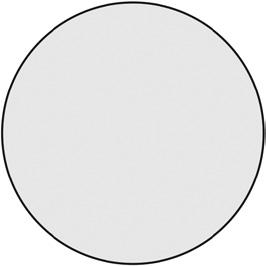
4. Is the process you used to find the perimeter of a circular object an efficient method to find the perimeter of a rectangle? Why or why not?
18:
Use string to measure the perimeter of various circles to the nearest quarter inch.
Lesson
Name Date
Use your string to the find the perimeter of the shape below to the nearest quarter inch.
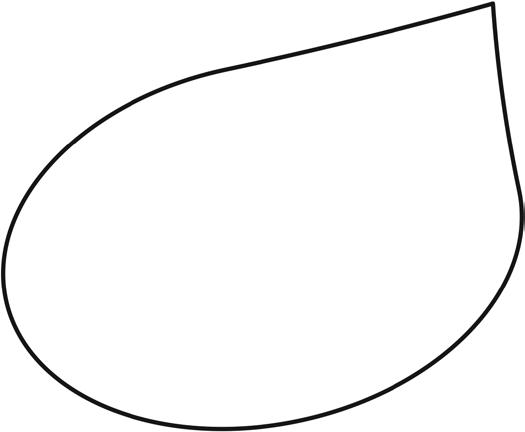
Use string to measure the perimeter of various circles to the nearest quarter inch.
Lesson 18:
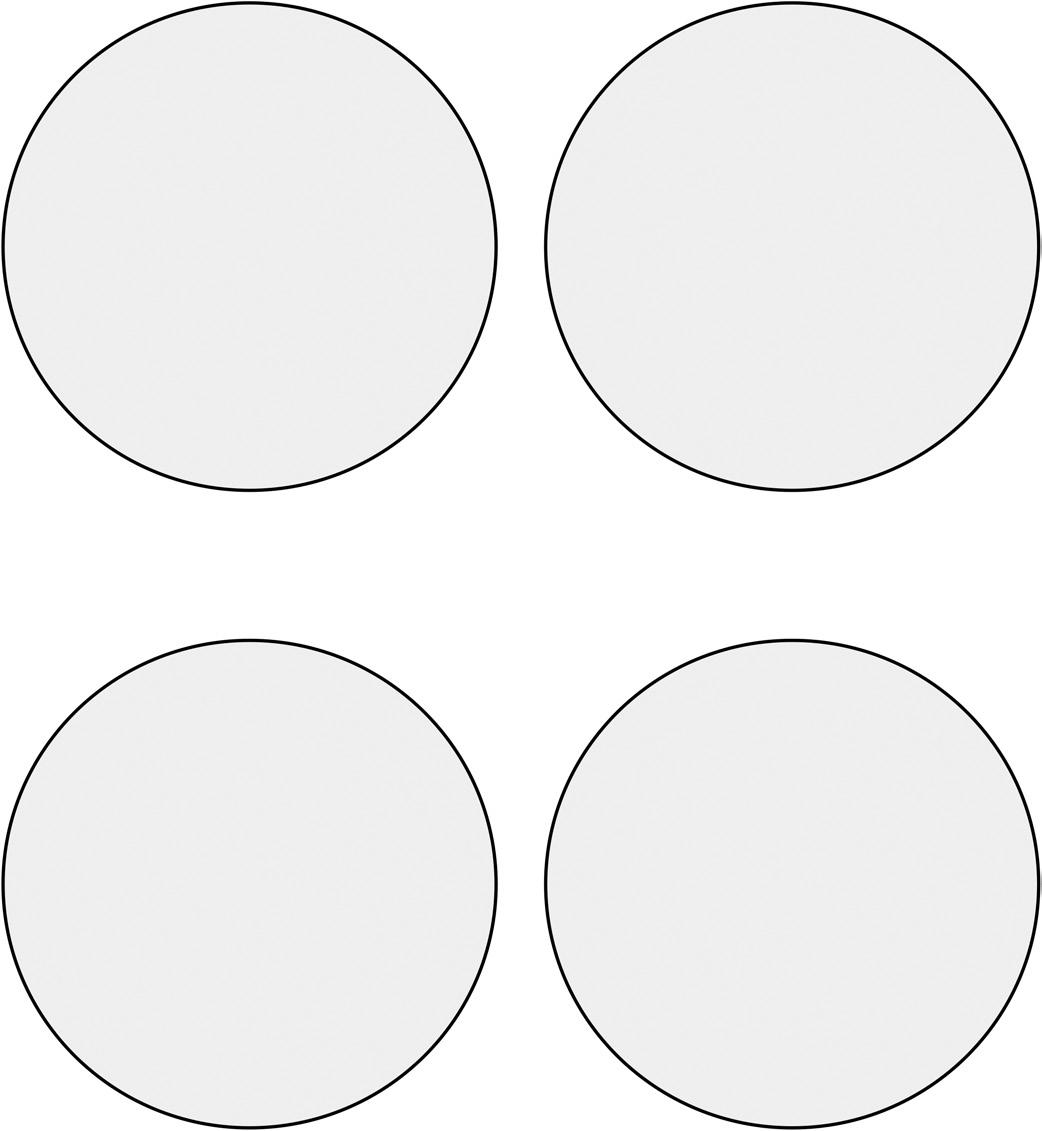
Use string to measure the perimeter of various circles to the nearest quarter inch.
circles
Lesson 18:
Lesson 19 Application Problem
Gil places two regular hexagons side by side as shown to make a new shape. Each side measures 6 centimeters. Find the perimeter of his new shape.
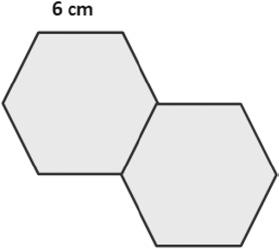
Use all four operations to solve problems involving perimeter and unknown measurements.
Lesson 19:
1. The shapes below are made up of rectangles. Label the unknown side lengths. Then, write and solve an equation to find the perimeter of each shape.
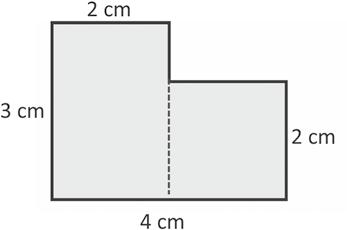
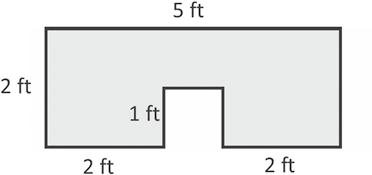
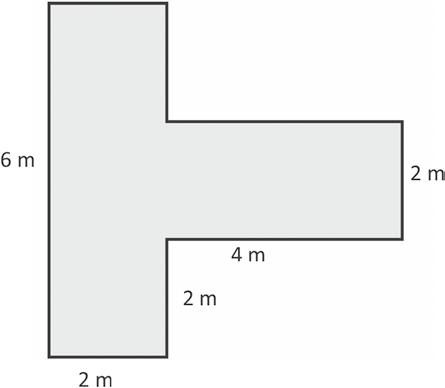
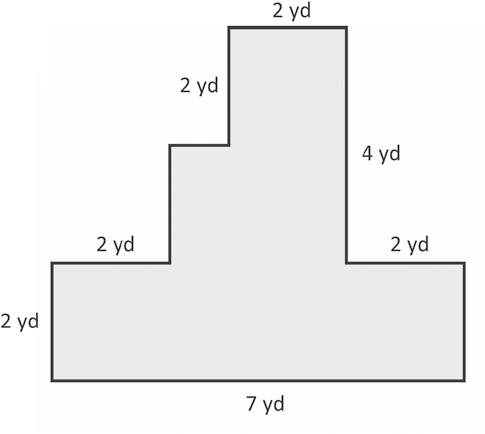
Use all four operations to solve problems involving perimeter and unknown measurements.
Lesson 19:
P =
b. P =
2. Nathan draws and labels the square and rectangle below. Find the perimeter of the new shape.

3. Label the unknown side lengths. Then, find the perimeter of the shaded rectangle.
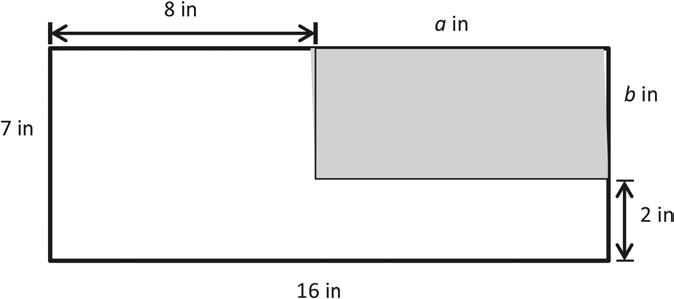
19:
Use all four operations to solve problems involving perimeter and unknown measurements.
Lesson
Name Date
Label the unknown side lengths. Then, find the perimeter of the shaded rectangle.
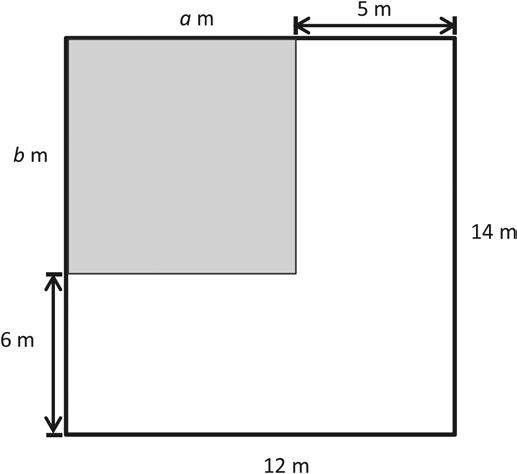
Lesson 19:
Use all four operations to solve problems involving perimeter and unknown measurements.
Lesson 20 Application Problem
Rita says that since 15 is larger than 12, she can draw more arrays to show 15 than she can to show 12. Is she correct? Model to solve.
Lesson 20: Construct rectangles from a given number of unit squares and determine the perimeters.
Name Date
1. Use unit squares to build as many rectangles as you can with an area of 24 square units. Shade in squares on your grid paper to represent each rectangle that you made with an area of 24 square units.
a. Estimate to draw and label the side lengths of each rectangle you built in Problem 1. Then, find the perimeter of each rectangle. One rectangle is done for you.
b. The areas of the rectangles in part (a) above are all the same. What do you notice about the perimeters?
20: Construct rectangles from a given number of unit squares and determine the perimeters.
Lesson
2. Use unit square tiles to build as many rectangles as you can with an area of 16 square units. Estimate to draw each rectangle below. Label the side lengths.
a. Find the perimeters of the rectangles you built.
b. What is the perimeter of the square? Explain how you found your answer.
3. Doug uses square unit tiles to build rectangles with an area of 15 square units. He draws the rectangles as shown below but forgets to label the side lengths. Doug says that Rectangle A has a greater perimeter than Rectangle B. Do you agree? Why or why not?

Lesson 20: Construct rectangles from a given number of unit squares and determine the perimeters.
Name Date
Tessa uses square-centimeter tiles to build rectangles with an area of 12 square centimeters. She draws the rectangles as shown below. Label the unknown side lengths of each rectangle. Then, find the perimeter of each rectangle.
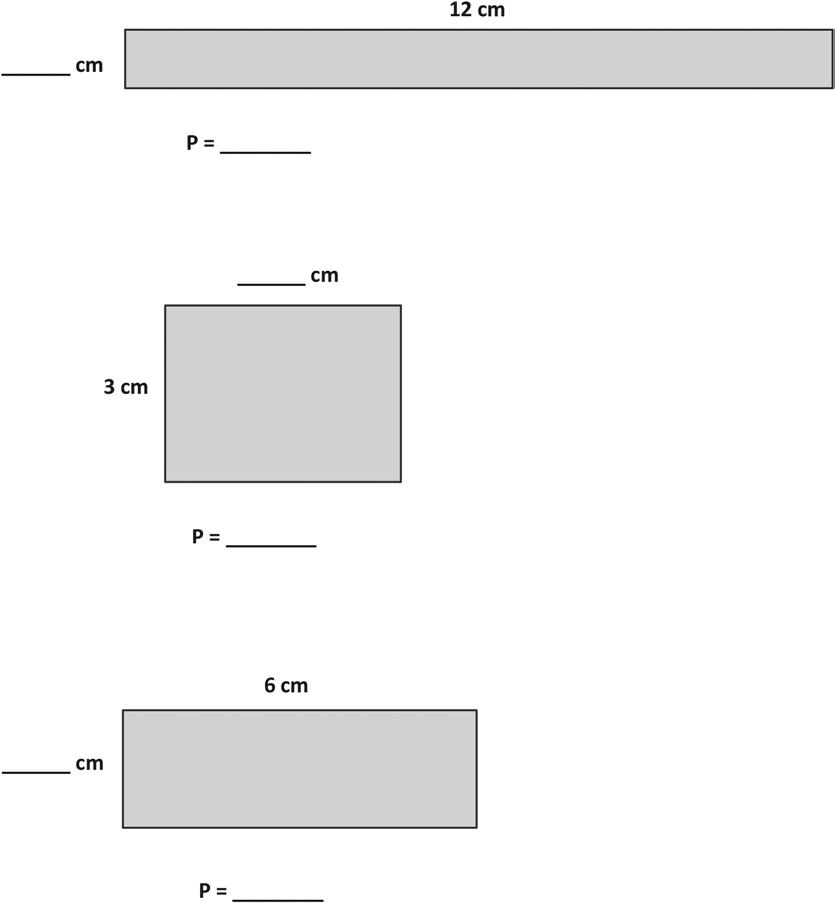
20: Construct rectangles from a given number of unit squares and determine the perimeters.
Lesson
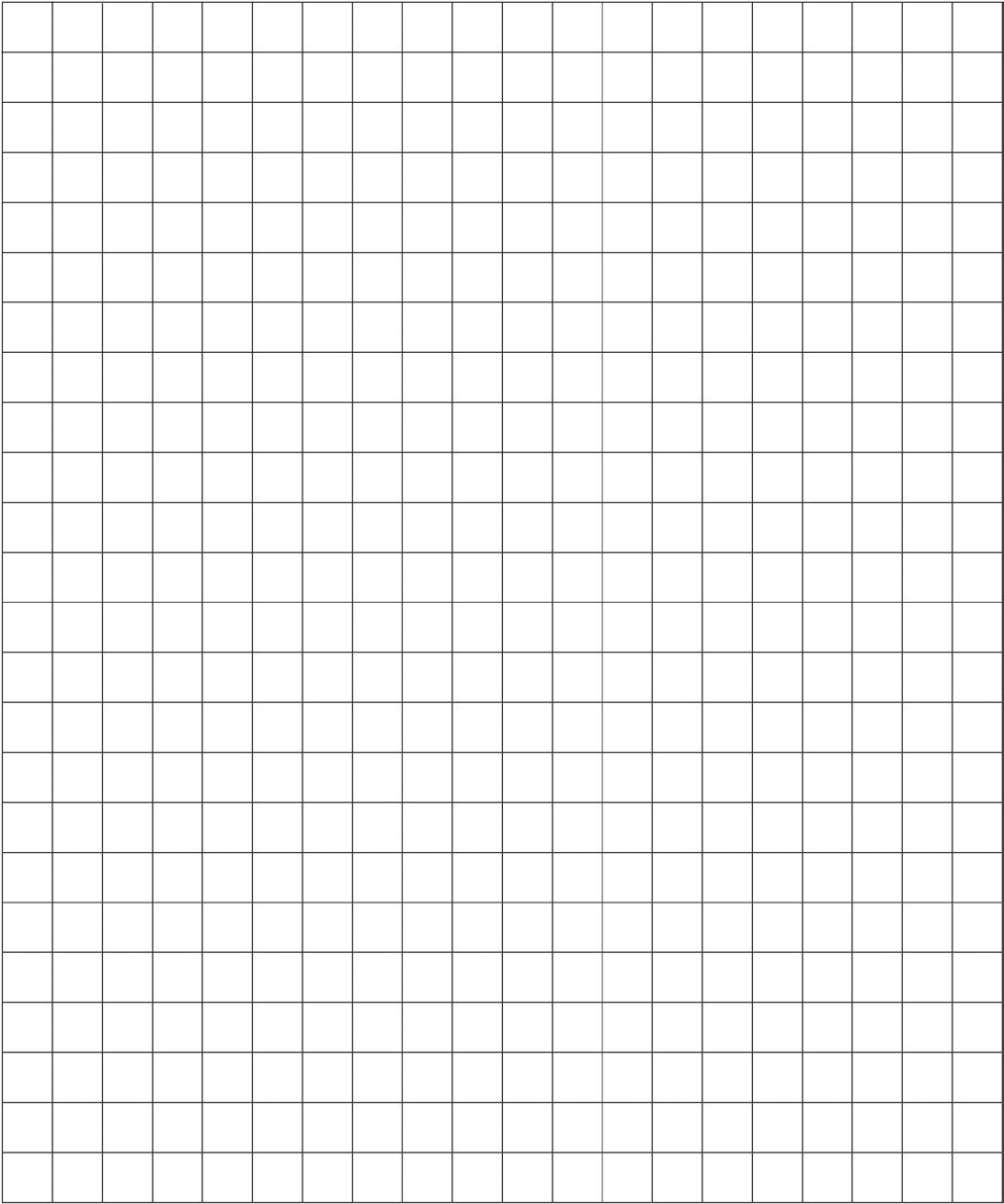
from a given number of unit squares and determine the perimeters.
Lesson 20: Construct rectangles
grid paper
Lesson 21 Application Problem
Marci says, “If a rectangle has a greater area than another rectangle, it must have a larger perimeter.” Do you agree or disagree? Show an example to prove your thinking.
Lesson 21: Use a line plot to record the number of rectangles constructed from a given number of unit squares.
Name Date
1. Use unit square tiles to make rectangles for each given number of unit squares. Complete the charts to show how many rectangles you can make for each given number of unit squares. The first one is done for you. You might not use all the spaces in each chart.
Number of unit squares = 12
Number of rectangles I made: 3
Number of unit squares = 13
Number of rectangles I made:
Width Length
Number of unit squares = 14
Number of rectangles I made:
Width Length
Number of unit squares = 15
Number of rectangles I made: Width Length
Number of unit squares = 16
Number of rectangles I made:
Width Length
Number of unit squares = 17
Number of rectangles I made:
Width Length
Number of unit squares = 18
Number of rectangles I made: Width Length
Lesson 21: Use a line plot to record the number of rectangles constructed from a given number of unit squares.
2. Create a line plot with the data you collected in Problem 1.
Number of Rectangles Made with Unit Squares

3. Which numbers of unit squares produce three rectangles?
4. Why do some numbers of unit squares, such as 13, only produce one rectangle?
Lesson 21: Use a line plot to record the number of rectangles constructed from a given number of unit squares.
Name Date
Use unit square tiles to make rectangles for the given number of unit squares. Complete the chart to show how many rectangles you made for the given number of unit squares. You might not use all the spaces in the chart.
Number of unit squares = 20
Number of rectangles I made:
Lesson 21: Use a line plot to record the number of rectangles constructed from a given number of unit squares.
Lesson 22 Application Problem
Molly builds a rectangular playpen for her pet rabbit. The playpen has an area of 15 square yards.
a. Estimate to draw and label as many possibilities as you can for the playpen.
b. Find the perimeters of the rectangles in part (a).
c. What other information do you need in order to re-create Molly’s playpen?
their areas.
Lesson 22: Construct rectangles with a given perimeter using unit squares and determine
Name Date
1. Use your square unit tiles to build as many rectangles as you can with a perimeter of 12 units.
a. Estimate to draw your rectangles below. Label the side lengths of each rectangle.
b. Explain your strategy for finding rectangles with a perimeter of 12 units.
c. Find the areas of all the rectangles in part (a) above.
d. The perimeters of all the rectangles are the same. What do you notice about their areas?
Lesson 22: Construct rectangles with a given perimeter using unit squares and determine their areas.
2. Use your square unit tiles to build as many rectangles as you can with a perimeter of 14 units.
a. Estimate to draw your rectangles below. Label the side lengths of each rectangle.
b. Find the areas of all the rectangles in part (a) above.
c. Given a rectangle’s perimeter, what other information do you need to know about the rectangle to find its area?
Lesson 22: Construct rectangles with a given perimeter using unit squares and determine their areas.
Name Date
Use your square unit tiles to build as many rectangles as you can with a perimeter of 8 units.
a. Estimate to draw your rectangles below. Label the side lengths of each rectangle.
b. Find the areas of the rectangles in part (a) above.
22: Construct rectangles with a given perimeter using unit squares and determine their areas.
Lesson
Name Date
Use the data you gathered from Problem Sets 20 and 21 to complete the charts to show how many rectangles you can create with a given perimeter. You might not use all the spaces in the charts.
Perimeter = 10 units
Number of rectangles you made:
Width Length Area
1 unit 4 units 4 square units
Perimeter = 12 units
Number of rectangles you made:
Width Length Area
Perimeter = 14 units
Number of rectangles you made:
Width Length Area
Perimeter = 16 units
Number of rectangles you made:
Width Length Area
Perimeter = 18 units
Number of rectangles you made:
Width Length Area
Perimeter = 20 units
Number of rectangles you made:
Width Length Area
Lesson 22: Construct rectangles with a given perimeter using unit squares and determine their areas.
Lesson 23 Application Problem
Mrs. Zeck will use 14 feet of tape to mark a rectangle on the gym wall. Draw several rectangles that Mrs. Zeck could make with her tape. Label the width and length of each rectangle.
23: Construct rectangles with a given perimeter using unit squares and determine their areas.
Lesson
Name Date
1. On your centimeter grid paper, shade and label as many rectangles as you can with a perimeter of 16 centimeters.
a. Sketch the rectangles below, and label the side lengths.
b. Find the area of each rectangle you drew above.
2. On your centimeter grid paper, shade and label as many rectangles as you can with a perimeter of 18 centimeters.
a. Sketch the rectangles below, and label the side lengths.
b. Find the area of each rectangle you drew above.
23: Construct rectangles with a given perimeter using unit squares and determine their areas.
Lesson
3. Use centimeter grid paper to shade in as many rectangles as you can with the given perimeters.
a. Use the charts below to show how many rectangles you shaded for each given perimeter. You might not use all the spaces in the charts.
Perimeter = 10 cm
Number of rectangles I made:
Perimeter = 20 cm
Number of rectangles I made:
b. Did you make a square with either of the given perimeters? How do you know?
4. Macy and Gavin both draw rectangles with perimeters of 16 centimeters. Use words and pictures to explain how it is possible for Macy’s and Gavin’s rectangles to have the same perimeters but different areas.
Lesson 23: Construct rectangles with a given perimeter using unit squares and determine their areas.
Name Date
On the grid below, shade and label at least two different rectangles with a perimeter of 20 centimeters.
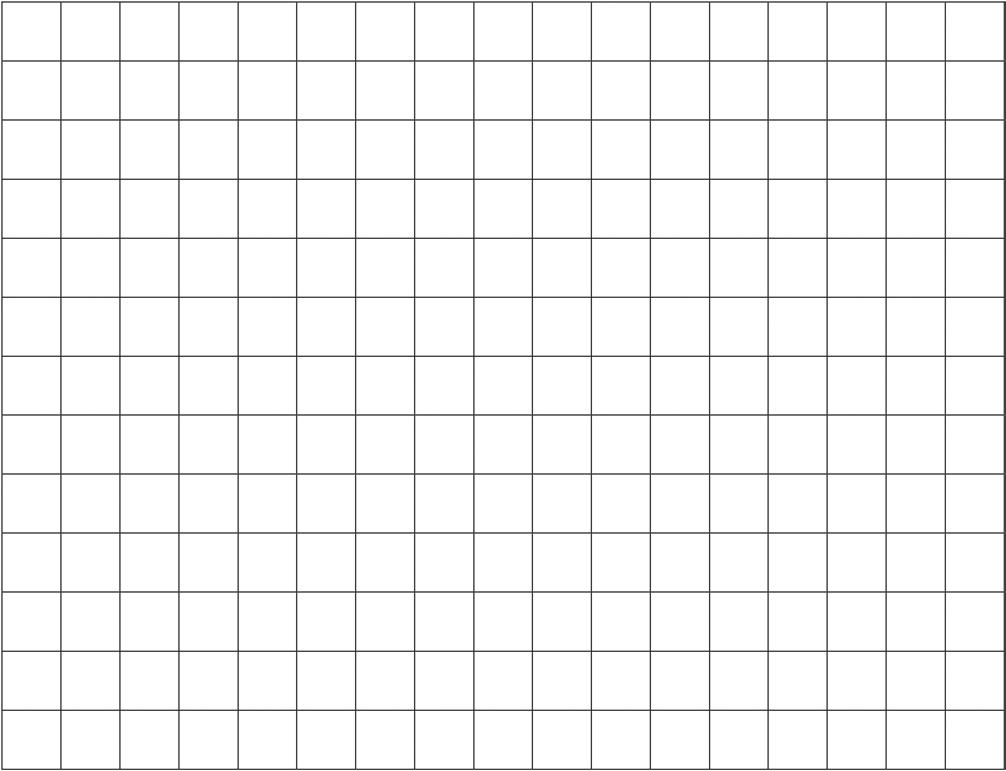
Lesson 23: Construct rectangles with a given perimeter using unit squares and determine their areas.
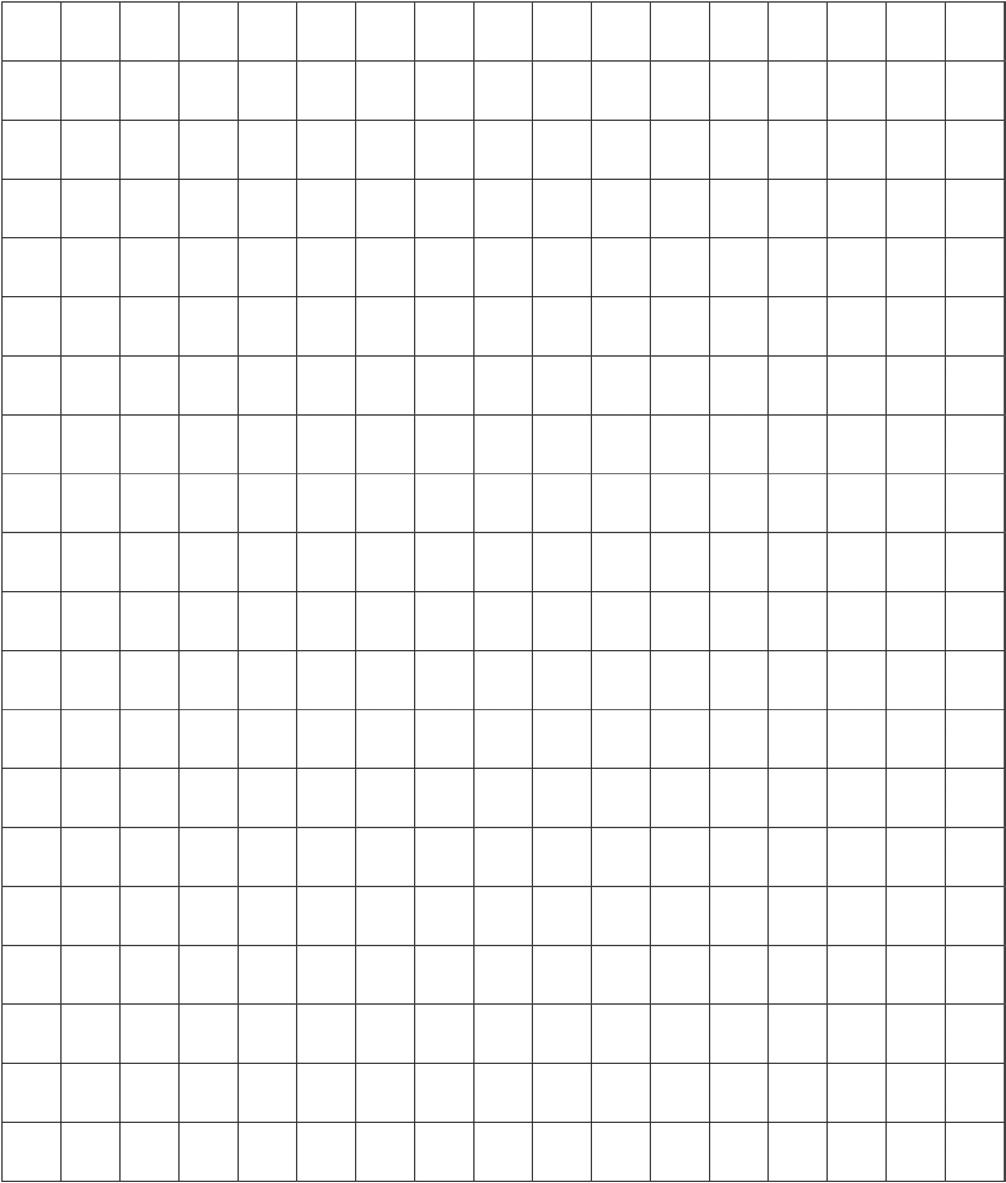
centimeter grid paper
Lesson 23: Construct rectangles with a given perimeter using unit squares and determine their areas.
Name Date
Use the data you gathered from Problem Sets 20 and 21 to complete the charts to show how many rectangles you can create with a given perimeter. You might not use all the spaces in the charts.
Perimeter = 10 units
Number of rectangles you made:
Width Length Area
1 unit 4 units 4 square units
Perimeter = 12 units
Number of rectangles you made:
Width Length Area
Perimeter = 14 units
Number of rectangles you made:
Width Length Area
Perimeter = 16 units
Number of rectangles you made:
Width Length Area
Perimeter = 18 units
Number of rectangles you made:
Width Length Area
Perimeter = 20 units
Number of rectangles you made:
Width Length Area
Lesson 23: Construct rectangles with a given perimeter using unit squares and determine their areas.
Name Date
1. Use the data you gathered from your Problem Sets to create a line plot for the number of rectangles you created with each given perimeter.
Number of Rectangles Made with a Given Perimeter

2. Why are all of the perimeter measurements even? Do all rectangles have an even perimeter?
24: Use a line plot to record the number of rectangles constructed in Lessons 22 and 23.
Lesson
3. Compare the two line plots we created. Is there any reason to think that knowing only the area of a rectangle would help you to figure out its perimeter or knowing only the perimeter of a rectangle would help you figure out its area?
4. Sumi uses unit square tiles to build 3 rectangles that have an area of 32 square units. Does knowing this help her find the number of rectangles she can build for a perimeter of 32 units? Why or why not?
5. George draws 3 rectangles that have a perimeter of 14 centimeters. Alicia tells George that there are more than 3 rectangles that have a perimeter of 14 centimeters. Explain why Alicia is correct.
Lesson 24: Use a line plot to record the number of rectangles constructed in Lessons 22 and 23.
Name Date
Suppose you have a rectangle with a perimeter of 2 cm. What can you conclude about the side lengths? Can all 4 sides of the rectangle measure a whole number of centimeters?
24: Use a line plot to record the number of rectangles constructed in Lessons 22 and 23.
Lesson
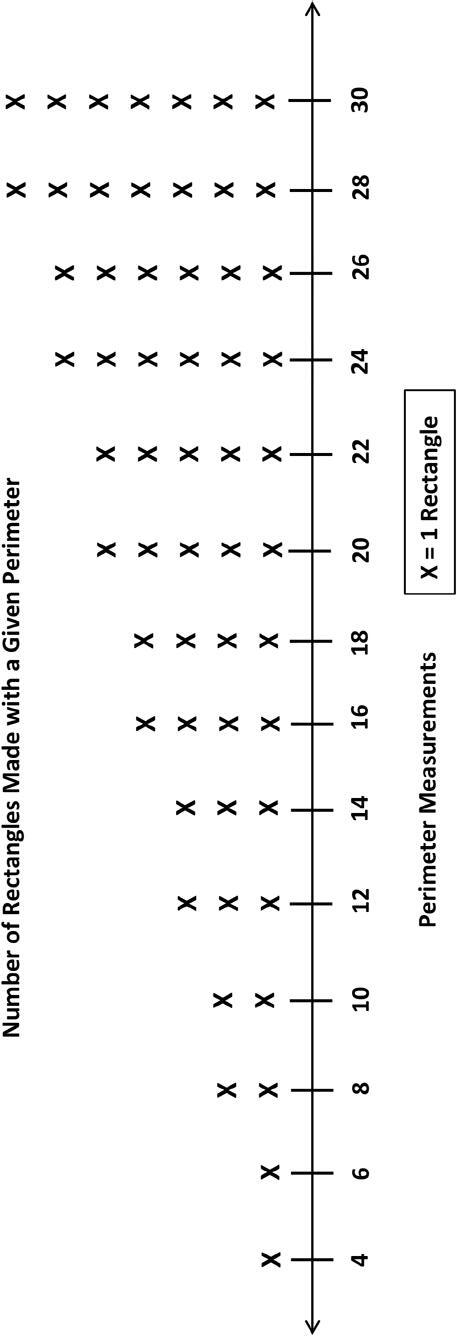
Lesson 24: Use a line plot to record the number of rectangles constructed in Lessons 22 and 23.
line plot
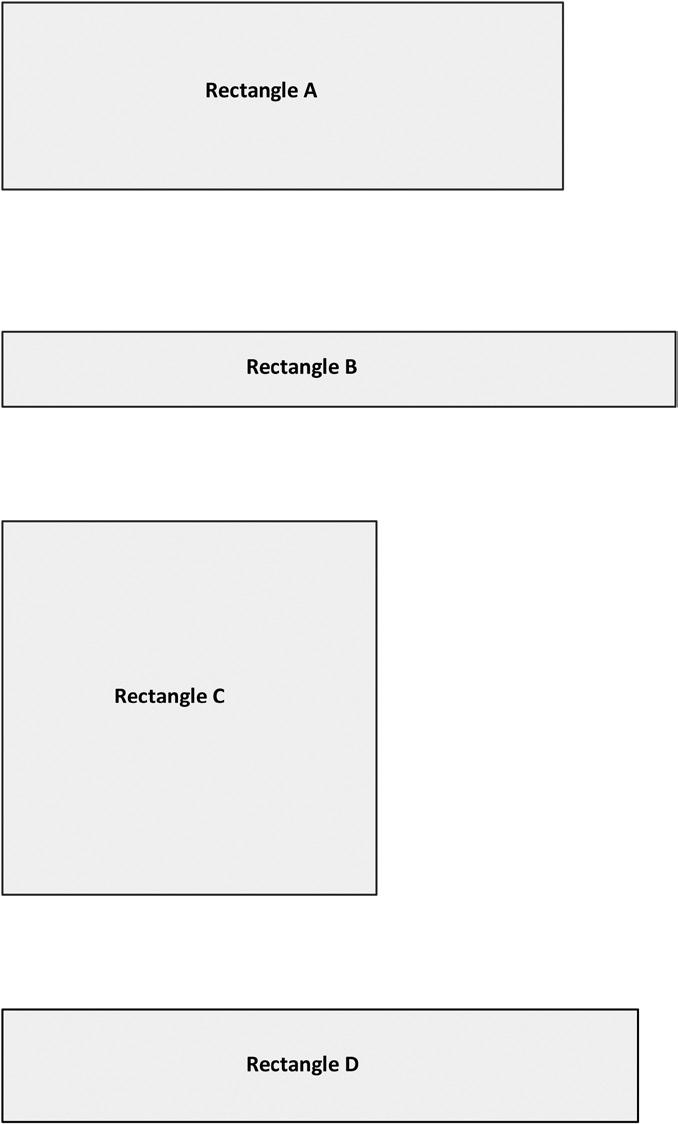
Lesson 24: Use a line plot to record the number of rectangles constructed in Lessons 22 and 23.
rectangles
1. Gale makes a miniature stop sign, a regular octagon, with a perimeter of 48 centimeters for the town he built with blocks. What is the length of each side of the stop sign?
2. Travis bends wire to make rectangles. Each rectangle measures 34 inches by 12 inches. What is the total length of the wire needed for two rectangles?
3. The perimeter of a rectangular bathroom is 32 feet. The width of the room is 8 feet. What is the length of the room?
25:
Solve a variety of word problems with perimeter.
4. Raj uses 6-inch square tiles to make a rectangle, as shown below. What is the perimeter of the rectangle in inches?
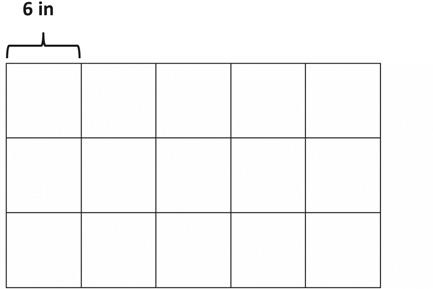
5. Mischa makes a 4-foot by 6-foot rectangular banner. She puts ribbon around the outside edges. The ribbon costs $2 per foot. What is the total cost of the ribbon?
6. Colton buys a roll of wire fencing that is 120 yards long. He uses it to fence in his 18-yard by 24-yard rectangular garden. Will Colton have enough wire fencing left over to fence in a 6-yard by 8-yard rectangular play space for his pet rabbit?
Solve a variety of word problems with perimeter.
Name Date
Adriana traces a regular triangle to create the shape below. The perimeter of her shape is 72 centimeters. What are the side lengths of the triangle? Solve a variety of word problems with perimeter.

Lesson 25:
Name Date
Use the given perimeters in the chart below to choose the widths and lengths of your robot’s rectangular body parts. Write the widths and lengths in the chart below. Use the blank rows if you want to add extra rectangular body parts to your robot.
Letter Body Part Perimeter
My robot has 7 to 9 rectangular body parts. Number of body parts:
Lesson 26:
Use rectangles to draw a robot with specified perimeter measurements, and reason about the different areas that may be produced.
Use the information in the chart below to plan an environment for your robot. Write the width and length for each rectangular item. Use the blank rows if you want to add extra circular or rectangular items to your robot’s environment.
My robot’s environment has 6 to 8 items. Number of items:
Use rectangles to draw a robot with specified perimeter measurements, and reason about the different areas that may be produced.
Name Date
Estimate to draw three different rectangles with a perimeter of 16 centimeters. Label the width and length of each rectangle.
Use rectangles to draw a robot with specified perimeter measurements, and reason about the different areas that may be produced.
Lesson 26:
Name Date
Draw a picture of your robot in its environment in the space below. Label the widths, lengths, and perimeters of all rectangles. Label the perimeters of all circular shapes.
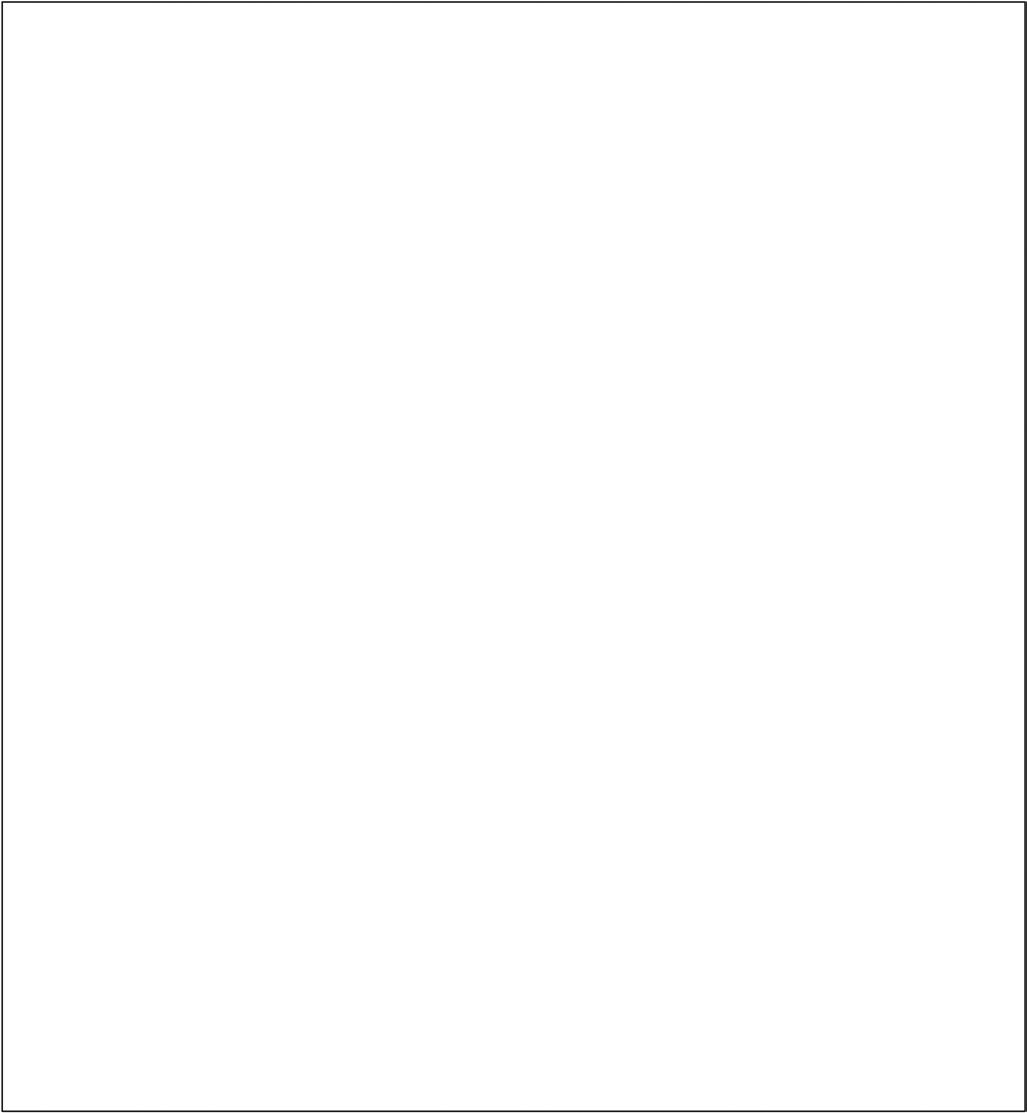
Use rectangles to draw a robot with specified perimeter measurements, and reason about the different areas that may be produced.
Lesson 27:
Name Date
1. Sketch rectangles with the following perimeters. Label the side lengths.
a. 22 cm
b. 30 cm
2. Explain the steps you took to create the rectangles with the given perimeters.
Use rectangles to draw a robot with specified perimeter measurements, and reason about the different areas that may be produced.
Lesson 27:
Lesson 28 Application Problem
Drew makes rectangular shoes for his robot. Each shoe has whole number side lengths and an area of 7 square centimeters. What is the total perimeter of both shoes? Is there more than one answer? Why or why not?
28:
Read Draw Write
Use rectangles to draw a robot with specified perimeter measurements, and reason about the different areas that may be produced.
Lesson
Name Date
1. Collect the area measurements of your classmates’ robot bodies. Make a line plot using everyone’s area measurements.
Areas of Robot Bodies

a. How many different measurements are on the line plot? Why are the measurements different?
b. What does this tell you about the relationship between area and perimeter?
Use rectangles to draw a robot with specified perimeter measurements, and reason about the different areas that may be produced.
2. Measure and calculate the perimeter of your construction paper in inches. Show your work below.
3. Sketch and label two shapes with the same perimeter from the robot’s environment. What do you notice about the way they look?
4. Write two or three sentences describing your robot and the environment in which it lives.
Use rectangles to draw a robot with specified perimeter measurements, and reason about the different areas that may be produced.
1. Use string to help you sketch a circle with a perimeter of about 15 centimeters.
2. Estimate to draw a rectangle with a perimeter of 15 centimeters. Label the width and length.
Use rectangles to draw a robot with specified perimeter measurements, and reason about the different areas that may be produced.
Lesson 28:
Note: Print on cardstock.
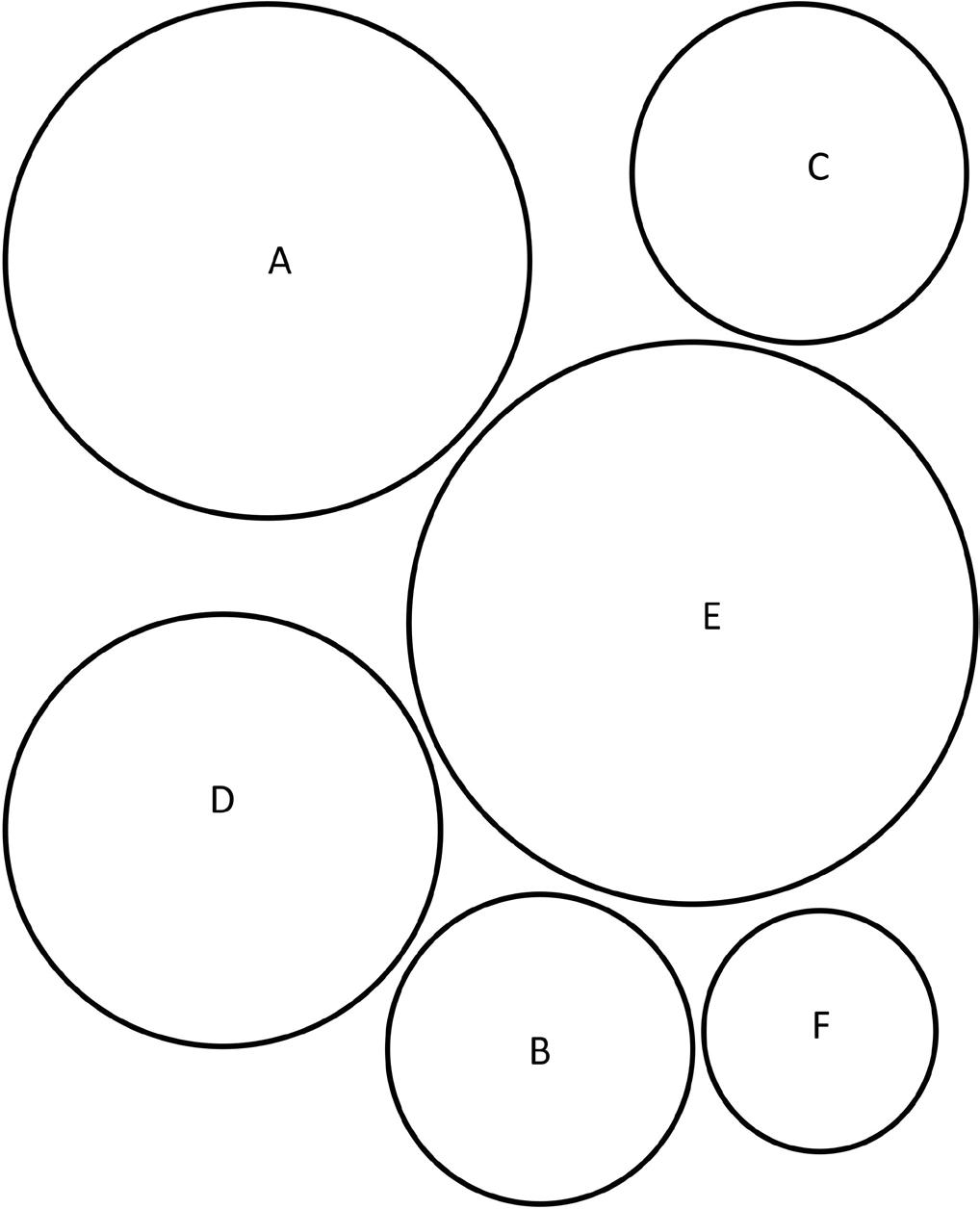
Lesson 28: Use rectangles to draw a robot with specified perimeter measurements, and reason about the different areas that may be produced.
circles (A–F)
Name Date
Part A: I reviewed ’s robot.
1. Use the chart below to evaluate your friend’s robot. Measure the width and length of each rectangle. Then, calculate the perimeter. Record that information in the chart below. If your measurements differ from those listed on the project, put a star by the letter of the rectangle.
I cm by
29:
Use rectangles to draw a robot with specified perimeter measurements, and reason about the different areas that may be produced.
2. Is the perimeter of the robot’s body double that of the arm? Show calculations below.
3. Is the perimeter of the robot’s neck half the perimeter of the head? Show calculations below.
Use rectangles to draw a robot with specified perimeter measurements, and reason about the different areas that may be produced.
Part B: I reviewed ’s robot environment.
4. Use the chart below to evaluate your friend’s robot environment. Measure the width and length of each rectangle. Then, calculate the perimeter. Use your string to measure the perimeters of nonrectangular items. Record that information in the chart below. If your measurements differ from those listed on the project, put a star by the letter of the shape.
29:
Use rectangles to draw a robot with specified perimeter measurements, and reason about the different areas that may be produced.
1. Record the perimeters and areas of Rectangles A and B in the chart below.
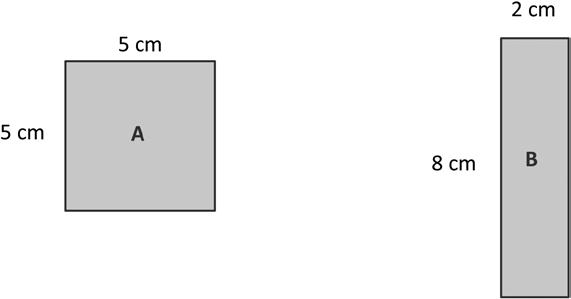
Rectangle: Width and Length: Perimeter Area
cm by cm
cm by cm
2. What is the same about Rectangles A and B? What is different?
29:
Use rectangles to draw a robot with specified perimeter measurements, and reason about the different areas that may be produced.
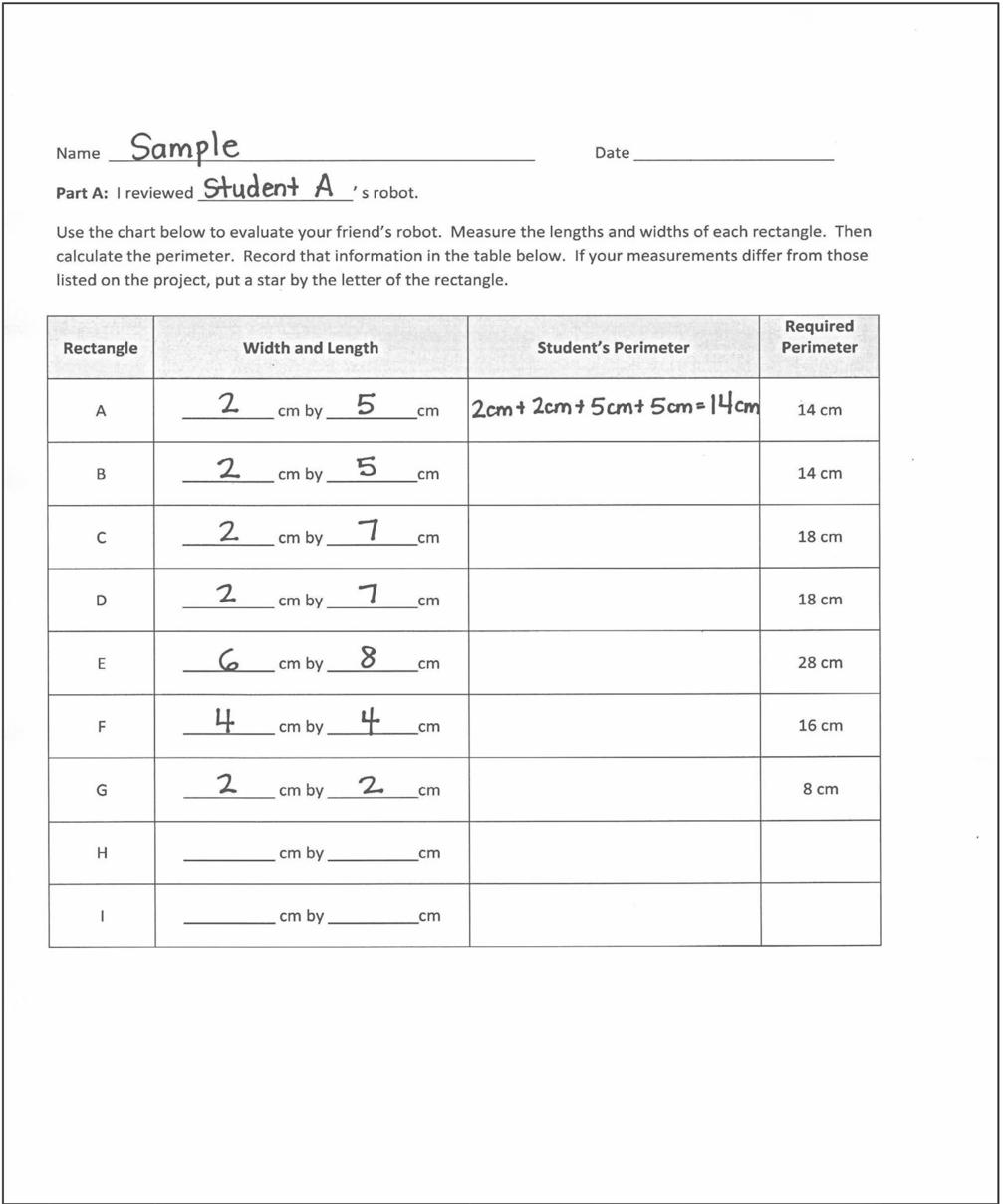
sample Problem Set
Use rectangles to draw a robot with specified perimeter measurements, and reason about the different areas that may be produced.
Lesson 29:
1. Gia measures her rectangular garden and finds the width is 9 yards and the length is 7 yards.
a. Estimate to draw Gia’s garden, and label the side lengths.
b. What is the area of Gia’s garden?
c. What is the perimeter of Gia’s garden?
2. Elijah draws a square that has side lengths of 8 centimeters.
a. Estimate to draw Elijah’s square, and label the side lengths.
b. What is the area of Elijah’s square?
c. What is the perimeter of Elijah’s square?
Lesson 30:
Solve a variety of word problems involving area and perimeter using all four operations.
d. Elijah connects three of these squares to make one long rectangle. What is the perimeter of this rectangle?
3. The area of Mason’s rectangular painting is 72 square inches. The width of the painting is 8 inches.
a. Estimate to draw Mason’s painting, and label the side lengths.
b. What is the length of the painting?
c. What is the perimeter of Mason’s painting?
d. Mason’s mom hangs the painting on a wall that already has two of Mason’s other paintings. The areas of the other paintings are 64 square inches and 81 square inches. What is the total area of the wall that is covered with Mason’s paintings?
Solve a variety of word problems involving area and perimeter using all four operations.
4. The perimeter of Jillian’s rectangular bedroom is 34 feet. The length of her bedroom is 9 feet.
a. Estimate to draw Jillian’s bedroom, and label the side lengths.
b. What is the width of Jillian’s bedroom?
c. What is the area of Jillian’s bedroom?
d. Jillian has a 4-foot by 6-foot rug in her room. What is the area of the floor that is not covered by the rug?
30:
Solve a variety of word problems involving area and perimeter using all four operations.
Name Date
Jennifer measures her rectangular sandbox and finds the width is 8 feet and the length is 6 feet.
a. Estimate to draw Jennifer’s sandbox, and label the side lengths.
b. What is the area of Jennifer’s sandbox?
c. What is the perimeter of Jennifer’s sandbox?
Lesson 30:
Solve a variety of word problems involving area and perimeter using all four operations.
Name Date
1. Kyle puts two rectangles together to make the L-shaped figure below. He measures some of the side lengths and records them as shown.
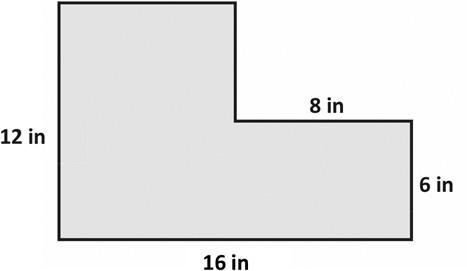
a. Find the perimeter of Kyle’s shape.
b. Find the area of Kyle’s shape.
c. Kyle makes two copies of the L-shaped figure to create the rectangle shown below. Find the perimeter of the rectangle.
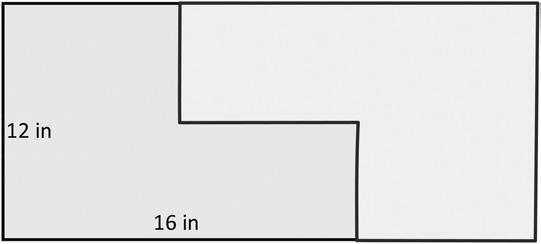
Lesson 31:
Solve a variety of word problems involving area and perimeter using all four operations.
2. Jeremiah and Hayley use a piece of rope to mark a square space for their booth at the science fair. The area of their space is 49 square feet. What is the length of the rope that Jeremiah and Hayley use if they leave a 3-foot opening so they can get in and out of the space?
3. Vivienne draws four identical rectangles as shown below to make a new, larger rectangle. The perimeter of one of the small rectangles is 18 centimeters, and the width is 6 centimeters. What is the perimeter of the new, larger rectangle?
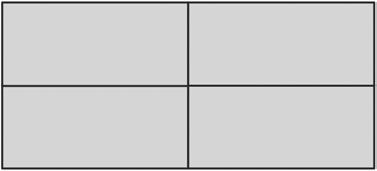
4. A jogging path around the outside edges of a rectangular playground measures 48 yards by 52 yards. Maya runs 3 1 2 laps on the jogging path. What is the total number of yards Maya runs?
Solve a variety of word problems involving area and perimeter using all four operations.
Name Date
Jeannette draws four identical squares as shown below to make a new, larger square. The length of one of the small square sides is 8 centimeters. What is the perimeter of the new, larger square?
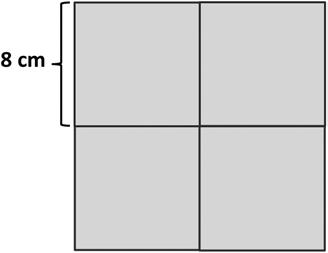
Solve a variety of word problems involving area and perimeter using all four operations.
Lesson 31:
Name Date
Use this form to critique your classmate’s problem-solving work.
Classmate: Problem Number:
Strategies My Classmate Used:
Things My Classmate Did Well:
Suggestions for Improvement:
Strategies I Would Like to Try Based on My Classmate’s Work:
Lesson 32:
Share and critique peer strategies for problem solving.
Name Date Jayden solves the problem as shown below.
The recreation center soccer field measures 35 yards by 65 yards. Chris dribbles the soccer ball around the field 4 times. What is the total number of yards Chris dribbles the ball?
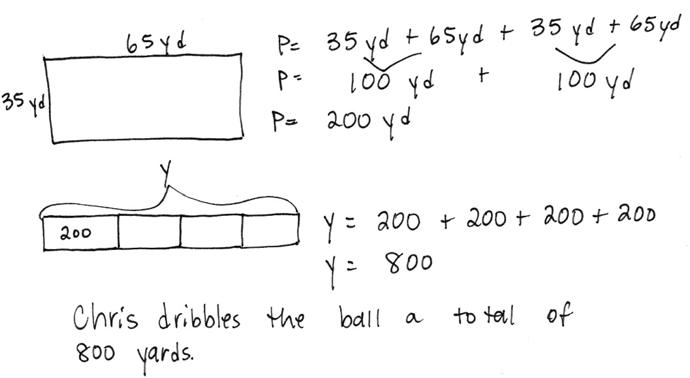
1. What strategies did Jayden use to solve this problem?
2. What did Jayden do well?
Lesson 32:
Share and critique peer strategies for problem solving.
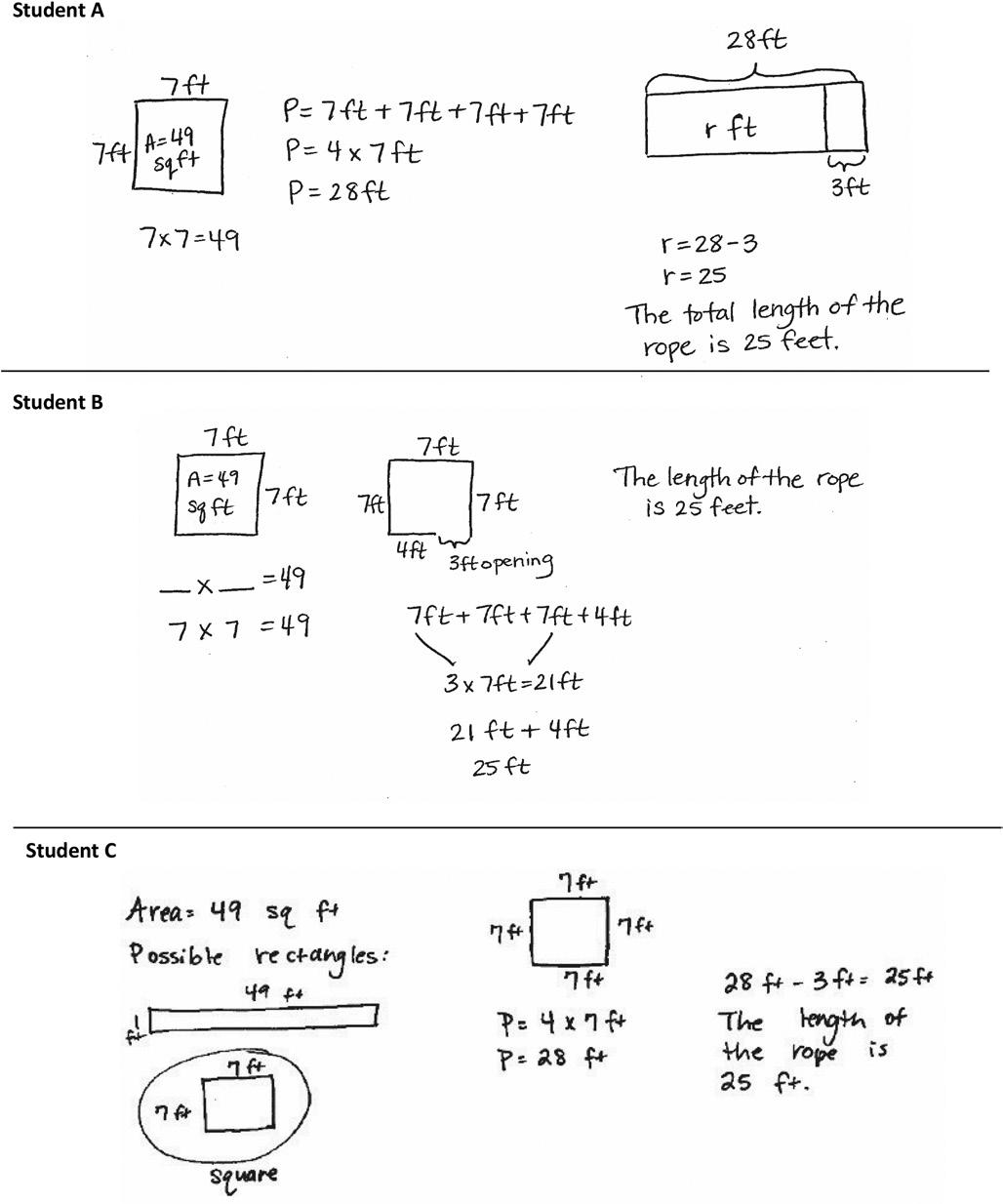
student work sample images
Share and critique peer strategies for problem solving.
Lesson 32:
Name Date
List some games we played today in the chart below. Place a check mark in the box that shows how you felt about your level of fluency as you played each activity. Check off the last column if you would like to practice this activity over the summer.
Activity
I still need some practice with my facts. I am fluent. I would like to put this in my summer activity book.
Solidify fluency with Grade 3 skills.
Name
Date
What fluency activity helped you the most in becoming fluent with your multiplication and division facts this year? Write three or four sentences to explain what made it so useful.
Lesson 33:
Solidify fluency with Grade 3 skills.
There are 9 bicycles and some tricycles at the repair shop. There are 42 total wheels on all the bicycles and tricycles. How many tricycles are in the shop?
Lesson 34:
Name
Date
Complete a math activity each day. To track your progress, color the box after you finish.
Summer Math Review: Weeks 1–5 Monday
Week 1
Week 2
Do jumping jacks as you count by twos from 2 to 20 and back.
Play a game from your Summer Practice booklet.
Week 3
Do squats as you count by threes from 3 to 30 and back.
Play a game from your Summer Practice booklet.
Use your tangram pieces to make a picture of your summer break.
Hop on one foot as you count by fours from 4 to 40 and back.
Week 4
Week 5
Bounce a ball as you count by 5 minutes to 1 hour and then to the half hour and quarter hours.
Do arm swings as you count by sixes from 6 to 60 and back.
Create a multiplication and/or division math game. Then, play the game with a partner.
Find, draw, and/or create different objects to show one-fourth.
Collect data about your family’s or friends’ favorite type of music. Show it on a bar graph. What did you discover from your graph?
Measure the widths of different leaves from the same tree to the nearest quarter inch. Then, draw a line plot of your data. Do you notice a pattern?
Go on a shape scavenger hunt. Find as many quadrilaterals in your neighborhood or house as you can.
Time how long it takes you to do a specific chore, like making the bed. See if you can do it faster the next day.
Read a recipe. What fractions does the recipe use?
Complete a Sprint.
Complete a Multiply by Pattern Sheet.
Read the weight in grams of different food items in your kitchen. Round the weights to the nearest 10 or 100 grams.
Find the sum and difference of 453 mL and 379 mL.
Complete a Sprint.
Complete a Multiply by Pattern Sheet.
Draw and label a floor plan of your house.
Measure the perimeter of the room where you sleep in inches. Then, calculate the area.
Use a stopwatch to measure how fast you can run 50 meters. Do it 3 times. What was your fastest time?
Complete a Sprint. Create resource booklets to support fluency with Grade 3 skills.
Name
Date
Complete a math activity each day. To track your progress, color the box after you finish.
Summer Math Review: Weeks 6–10
Monday
Week
6 Alternate counting with a friend or family member by sevens from 7 to 70 and back.
7
Week
Jump forward and back as you count by eights from 8 to 80 and back.
Play a game from your Summer Practice booklet.
Play a game from your Summer Practice booklet.
Write a story problem for 7 × 6.
8
Week
9
Week
Do arm crosses as you count by nines from 9 to 90 and back.
Teach someone the nines finger trick.
Jump rope as you count up by tens from 280 to 370 and back down.
Create a multiplication and/or division math game. Then, play the game with a partner.
Find, draw, and/or create different objects to show one-third.
Use string to measure the perimeter of circular items in your house to the nearest quarter inch.
Write a story problem for 72 ÷ 8.
Solve 15 × 4. Draw a model to show your thinking.
Complete a Multiply by Pattern Sheet.
Go on a shape scavenger hunt. Find as many triangles and hexagons in your neighborhood as you can.
Build a 4 by 6 array with objects from your house. Write 2 multiplication and 2 division sentences for your array.
Measure or find the capacity in milliliters of different liquids in your kitchen. Round each to the nearest 10 or 100 milliliters.
Measure the weight of different produce at the grocery store. What unit did you measure in? What are the lightest and heaviest objects you weighed?
Complete a Sprint.
Complete a Multiply by Pattern Sheet.
Complete a Sprint.
Week 10
Count by sixes starting at 48. Count as high as you can in one minute.
Draw and label a floor plan of your dream tree house.
Find the perimeter of a different room in your house. How much smaller or larger is it compared to the perimeter of the room where you sleep?
Show someone your strategy to solve 8 × 16.
Create resource booklets to support fluency with Grade 3 skills.
Complete a Multiply by Pattern Sheet.
Credits
Great Minds® has made every effort to obtain permission for the reprinting of all copyrighted material. If any owner of copyrighted material is not acknowledged herein, please contact Great Minds for proper acknowledgment in all future editions and reprints of this module.
Module 7: Credits
A Story of Units®
Eureka Math helps students truly understand mathematics and connect it to the real world, preparing them to solve problems they have not encountered. Great Minds teachers and mathematicians believe that it is not enough for students to know the process for solving a problem; they need to understand why that process works.
Eureka Math presents mathematics as a story, one that develops from grades PK through 12. In A Story of Units, our elementary curriculum, this sequencing has been joined with methods of instruction that have been proven to work, in this nation and abroad.
Great Minds is here to make sure you succeed with an ever-growing library of resources, including free tip sheets, resource sheets, and full grade-level modules at eureka-math.org.
Sequence of Grade 3 Modules
Module 1: Properties of Multiplication and Division and Solving Problems with Units of 2–5 and 10
Module 2: Place Value and Problem Solving with Units of Measure
Module 3: Multiplication and Division with Units of 0, 1, 6–9, and Multiples of 10
Module 4: Multiplication and Area
Module 5: Fractions as Numbers on the Number Line
Module 6: Collecting and Displaying Data
Module 7: Geometry and Measurement Word Problems
On the cover
Vincent van Gogh (1853–1890), Flower Beds in Holland, 1883. Oil on canvas on wood, 48.9 x 66 cm (19 1/4 x 26 in.); framed: 71.1 x 88.9 x 8.3 cm (28 x 35 x 3 1/4 in.). Collection of Mr. and Mrs. Paul Mellon (1983.1.21).
Photo Credit: Courtesy National Gallery of Art, Washington, D.C.
What does this painting have to do with math?
In an effort to take advantage of every opportunity to build students’ cultural literacy, Great Minds features an important work of art or architecture on the cover of each book we publish. We select images that we know students and teachers will love to look at again and again. These works also relate, in visual terms, to ideas taken up in the book. Quantity, grouping, arrangement, and order are among the many fascinating concepts we discover in mathematics and—as Vincent van Gogh showed in this painting of tulip beds—in the world around us.
Published by Great Minds PBC
